Ireland is known for its beautiful landscape, green foliage, and stunning array of birds. This small island nation is home to over 200 species of birds, many of which are unique to the region.
From majestic swans to colorful larks and rare birds of prey, Ireland’s birdlife is both diverse and vibrant. From the rugged cliffs of the west coast to the lush bogs and woodlands of the east, Ireland is a paradise for birdwatchers and nature enthusiasts alike.
1. Barn Owl
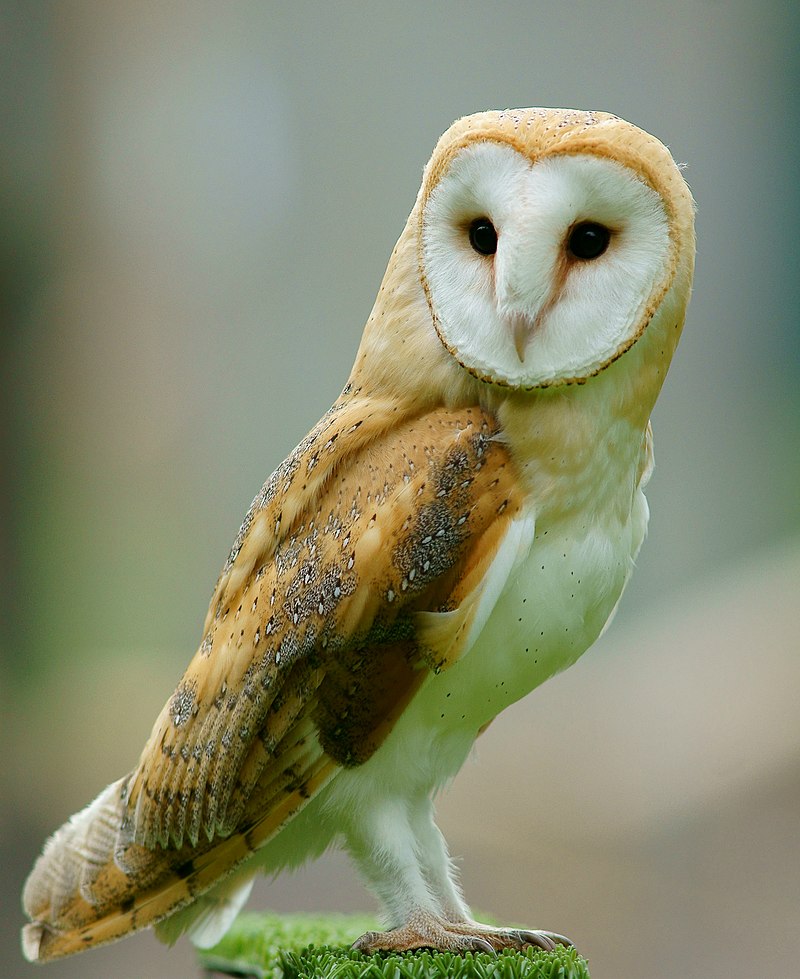
Barn owls are a beautiful and fascinating species of birds found around the world, except in polar and desert regions, most of Indonesia, and some Pacific Islands.
They have large eyes, thin legs, and long wings that help them to hunt silently in low-light conditions.
Their white coloring helps them blend into their surroundings making it easier for them to catch prey.
Barn owls are nocturnal hunters who use their impressive hearing capabilities to locate rodents moving within vegetation or tunnels beneath the ground.
They also feed on insects such as beetles, moths, etc., which they can detect from high up in flight using their excellent vision even at night time.
The barn owl plays an important role in balancing ecosystems by controlling rodent populations which is why they should be protected wherever possible so that this vital service continues uninterruptedly.
Scientific classification:
| Kingdom | Animalia |
| Phylum | Chordata |
| Class | Aves |
| Order | Strigiformes |
| Family | Tytonidae |
| Genus | Tyto |
| Species | T. alba |
2. Common Chaffinch

The Common Chaffinch is a beautifully colored small passerine bird belonging to the finch family.
The males have striking blue-grey caps and rust-red underparts, while the females are more subtle in their coloring but both possess two distinct white wing bars and white sides on their tails.
This gorgeous bird has an incredibly strong voice which can be heard for miles as it sings from exposed perches during mating season.
It lives mainly throughout Europe but also in parts of North Africa and Asia too, favoring woodland areas with plenty of shrubs or trees nearby where they find shelter amongst foliage when needed.
They feed predominantly on seeds from weeds or grains found within grasslands making them particularly useful birds for farmers who rely heavily upon pest control that these little ones provide.
Scientific classification:
| Kingdom | Animalia |
| Phylum | Chordata |
| Class | Aves |
| Order | Passeriformes |
| Family | Fringillidae |
| Subfamily | Fringillinae |
| Genus | Fringilla |
| Species | F. coelebs |
3. Wrens
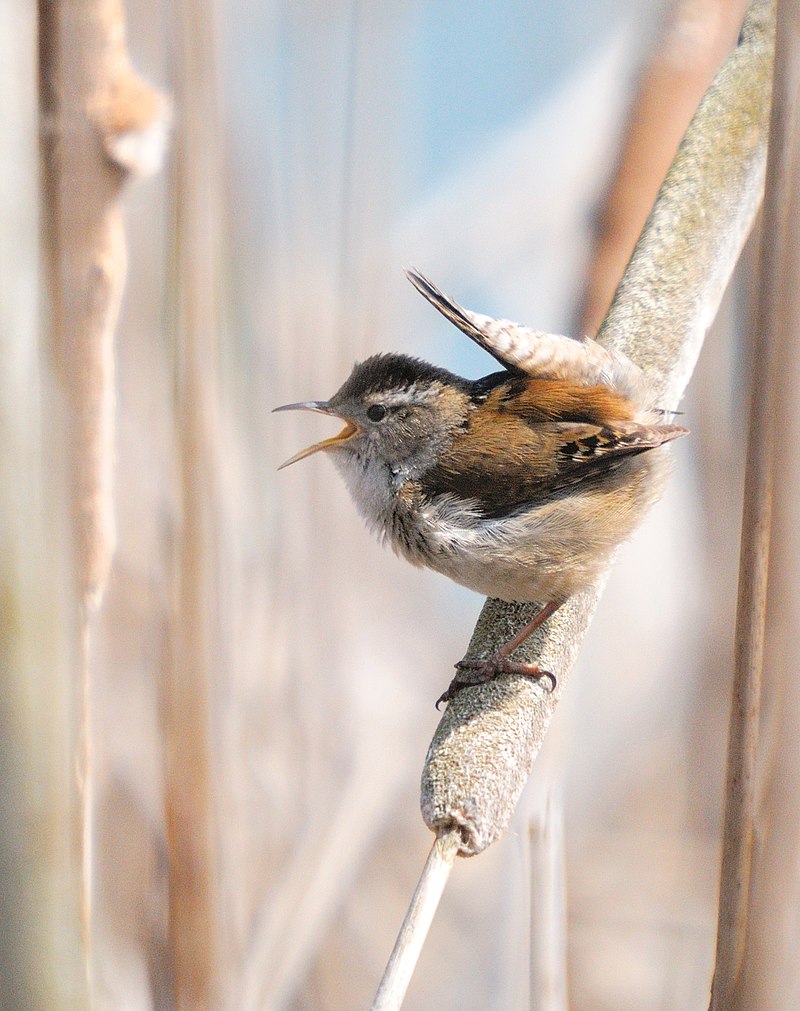
Wrens are a family of small brown passerine birds found mainly in the Americas. They are considered one of the most abundant bird species, with 88 known varieties divided into 19 genera.
The Eurasian wren is the only type that inhabits Europe and other parts of the Old World, where it’s commonly referred to simply as “wren.”
This species has been given its name due to similar-looking unrelated birds living elsewhere such as New Zealand wrasses.
Wrens have tiny bodies with thin bills and long tails which they often hold upright for hours at a time while singing their loud cheery songs from treetops or low shrubs.
Their diet consists mostly of insects but can also include fruits and seeds depending on availability in their habitat range.
Scientific classification:
| Kingdom | Animalia |
| Phylum | Chordata |
| Class | Aves |
| Order | Passeriformes |
| Superfamily | Certhioidea |
| Family | Troglodytidae Swainson, 1832 |
4. Eurasian Blue Tit
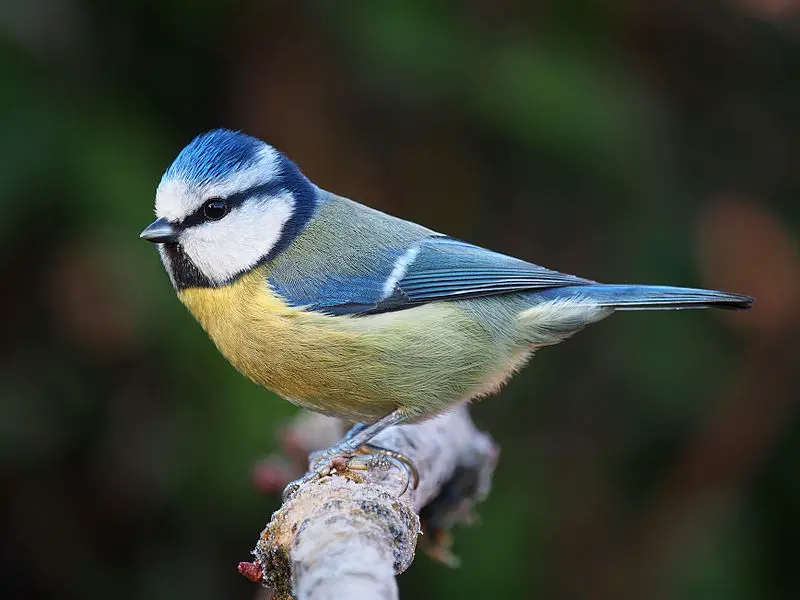
The Eurasian blue tit is a small passerine bird belonging to the Paridae family. Its bright blue and yellow plumage makes it easily recognizable, along with its small size.
They are usually resident birds that do not migrate, living throughout temperate or subarctic Europe and the western Palearctic in deciduous woodlands.
These birds breed year-round and are common residents of these areas.
Their diet consists mainly of insects but they also feed on seeds during winter months when insects become scarce.
They can be found both alone or in pairs searching for food amongst trees branches, shrubs, and grasses as well as visiting gardens for supplementary food sources such as peanut feeders provided by garden owners.
Scientific classification:
| Kingdom | Animalia |
| Phylum | Chordata |
| Class | Aves |
| Order | Passeriformes |
| Family | Paridae |
| Genus | Cyanistes |
| Species | C. caeruleus |
5. Barnacle Goose
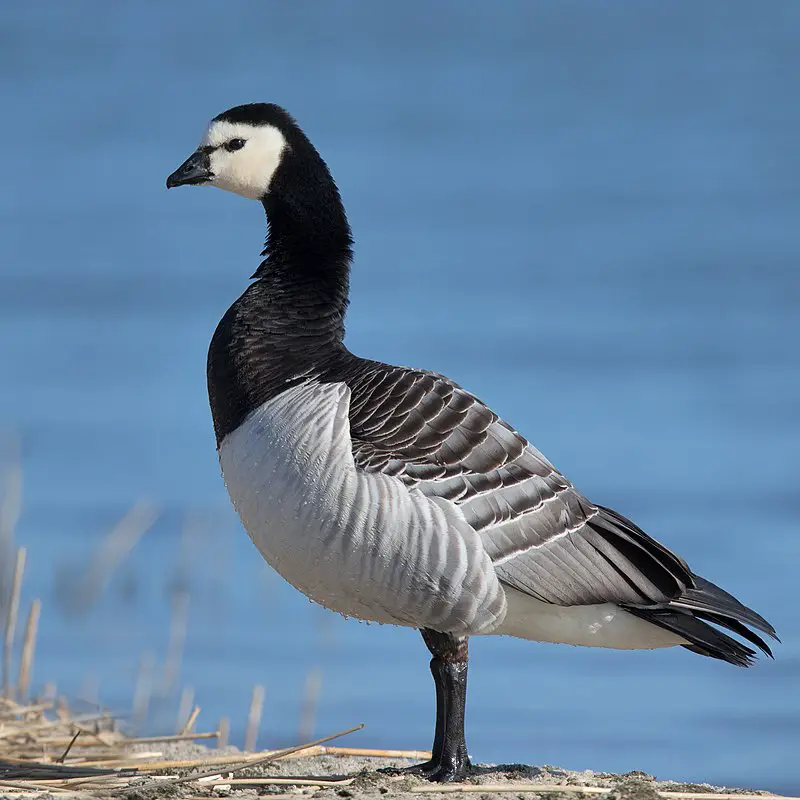
The Barnacle Goose is a species of black goose from the Branta genus. It has mostly black plumage and can be distinguished from other types of geese, such as grey Anser species, by its unique coloring.
This bird was first classified taxonomically in 1758 and genetic studies have recently revealed that it is related to the Cackling Goose lineage rather than brant geese which it bears resemblance to.
The barnacle goose lives all around northern Europe during winter months but travels further north into Greenland or Svalbard for breeding season when they will lay eggs on cliffs close to water sources so their young ones may take advantage of food-rich waters below them easily after hatching.
Scientific classification:
| Kingdom | Animalia |
| Phylum | Chordata |
| Class | Aves |
| Order | Anseriformes |
| Family | Anatidae |
| Genus | Branta |
| Species | B. leucopsis |
6. European Greenfinch
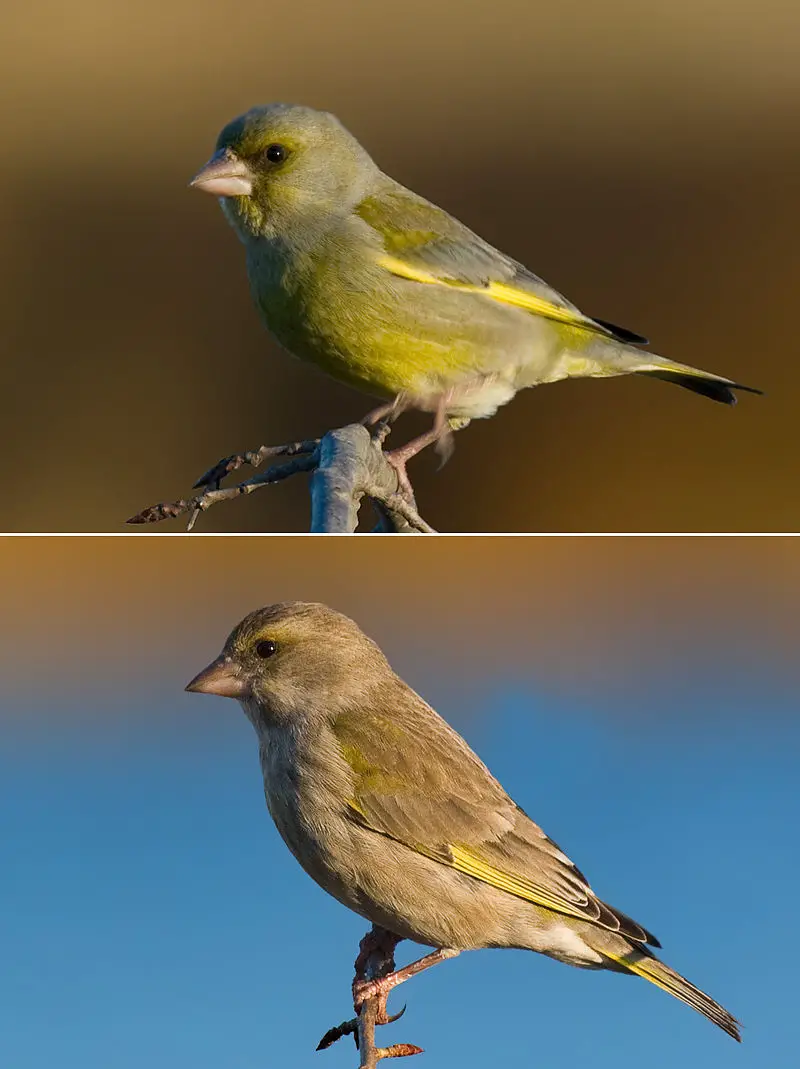
The European Greenfinch is a small, passerine bird from the finch family Fringillidae. It can be found throughout Europe, North Africa, and Southwest Asia.
Some of its northernmost populations migrate further south during winter for warmer climates.
The species has been introduced to Australia, New Zealand, Uruguay, and Argentina as well with great success in these new environments.
It was first described scientifically by Carl Linnaeus back in 1758 who noted its bright green feathers along with yellow edges on the wings and tail which make it an unmistakable sight when seen up close or at a distance.
while flying through open grasslands or wooded areas where they are known to feed on insects and seeds alike making them highly adaptable birds that find food sources easily wherever they go.
Scientific classification:
| Kingdom | Animalia |
| Phylum | Chordata |
| Class | Aves |
| Order | Passeriformes |
| Family | Fringillidae |
| Subfamily | Carduelinae |
| Genus | Chloris |
| Species | C. chloris |
7. European Goldfinch
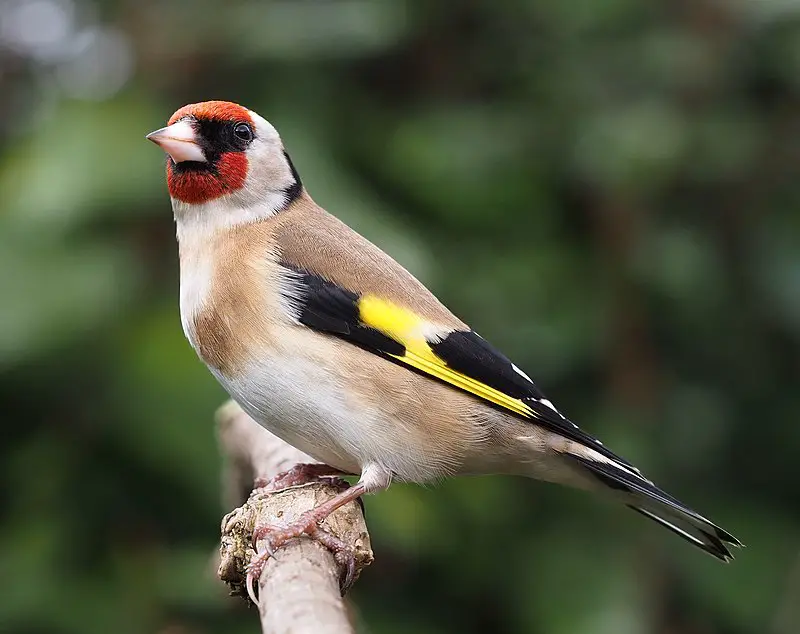
The European Goldfinch is a small passerine bird belonging to the finch family. It inhabits Europe, North Africa, and western and central Asia but has been introduced in other places such as Australia, New Zealand, and Uruguay.
The breeding male of this species can be easily identified by its red face with black markings around the eyes and black-and-white head.
Its back and flanks are buff or yellowish while it has white underparts which contrast well with its dark wings edged in white feathers.
This bird feeds on grains from plants like millet or sunflower seeds along with insects occasionally when available during summer months for a food source.
In winter they flock together near sources of water where they find their food among weeds growing there at that time of year.
Scientific classification:
| Kingdom | Animalia |
| Phylum | Chordata |
| Class | Aves |
| Order | Passeriformes |
| Family | Fringillidae |
| Subfamily | Carduelinae |
| Genus | Carduelis |
| Species | C. carduelis |
8. Peregrine Falcon

The Peregrine Falcon is a majestic bird of prey belonging to the family Falconidae. It has a blue-grey back, barred white underparts, and a black head making it easily recognizable.
This intelligent raptor is known for its incredible speed reaching over 320 km/h (200 mph) during hunting dives – one of the fastest animals in existence.
The peregrine falcon can be found around the world from Arctic tundra to tropical rainforests thriving with humans or in high alpine mountains far away from civilization.
With their beauty, power, and adaptability they are an impressive species that have earned respect among many cultures throughout history as symbols of strength and endurance.
Scientific classification:
| Kingdom | Animalia |
| Phylum | Chordata |
| Class | Aves |
| Order | Falconiformes |
| Family | Falconidae |
| Genus | Falco |
| Species | F. peregrinus |
9. Coal Tit
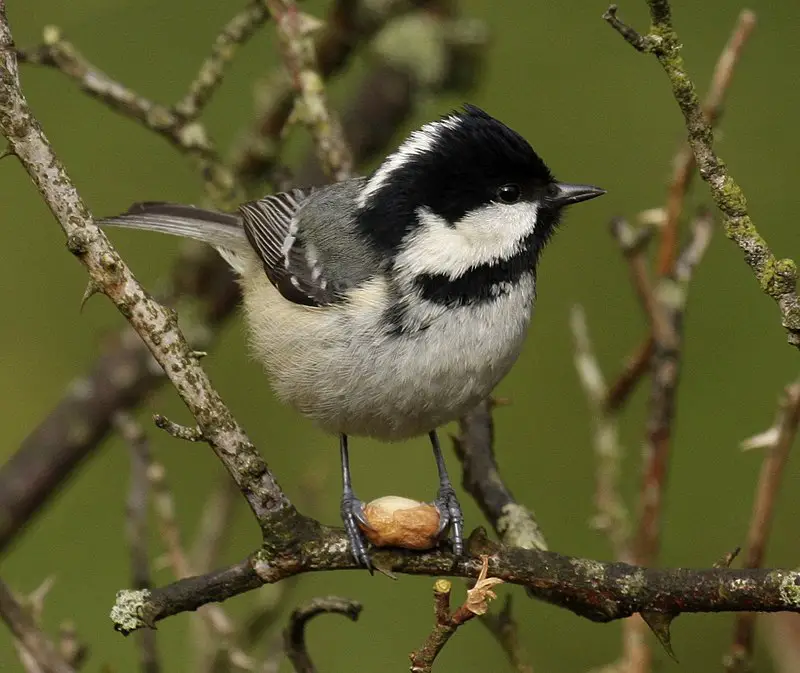
The Coal Tit, also known as the Cole Tit is a small passerine bird belonging to the Paridae family. It has an extensive range, from temperate and subtropical areas in Europe to North Africa.
First described by Carl Linnaeus in Systema Natura back in 1758, it’s now commonly grouped with its cousin – The Black-Crested Tit.
This species thrives best when living near forests or other wooded habitats that provide them with plenty of food sources like insects and seeds.
They are considered quite common throughout their range due to their adaptability and resilience which makes them well suited for urban environments too.
Scientific classification:
| Kingdom | Animalia |
| Phylum | Chordata |
| Class | Aves |
| Order | Passeriformes |
| Family | Paridae |
| Genus | Periparus |
| Species | P. ater |
10. Great Tit
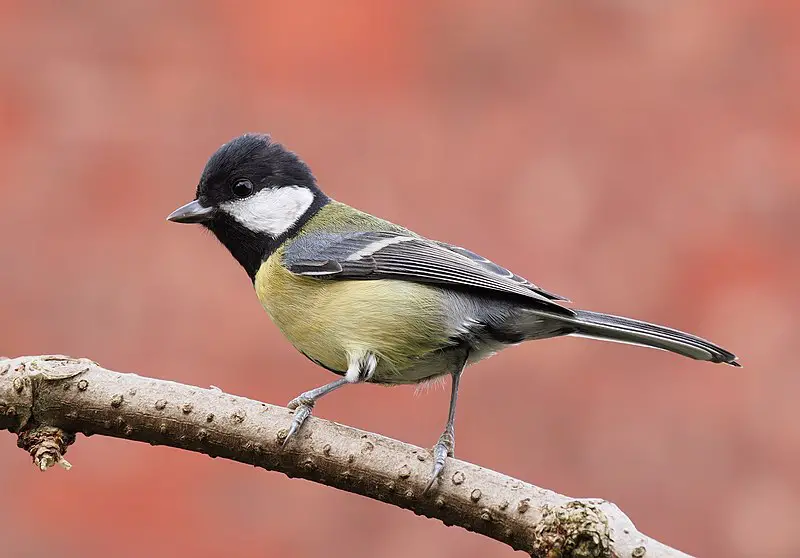
The Great Tit is a small passerine bird found in woodlands throughout Europe, the Middle East, and Central Asia. Its beautiful black and white plumage with bold yellow or green patches makes it easily distinguishable from other species of its family.
It generally does not migrate except for harsh winters but will stay resident in any kind of woodland area.
The diet consists mainly of insects, seeds, and nuts which are found by searching through trees or scavenging from feeders placed near gardens.
Great Tits are also known to be clever problem solvers; they can open milk bottles left out unattended as well as cracking sunflower seeds that provide them essential nutrients during winter months when food is scarce.
Scientific classification:
| Kingdom | Animalia |
| Phylum | Chordata |
| Class | Aves |
| Order | Passeriformes |
| Family | Paridae |
| Genus | Parus |
| Species | P. major |
11. Golden Eagle
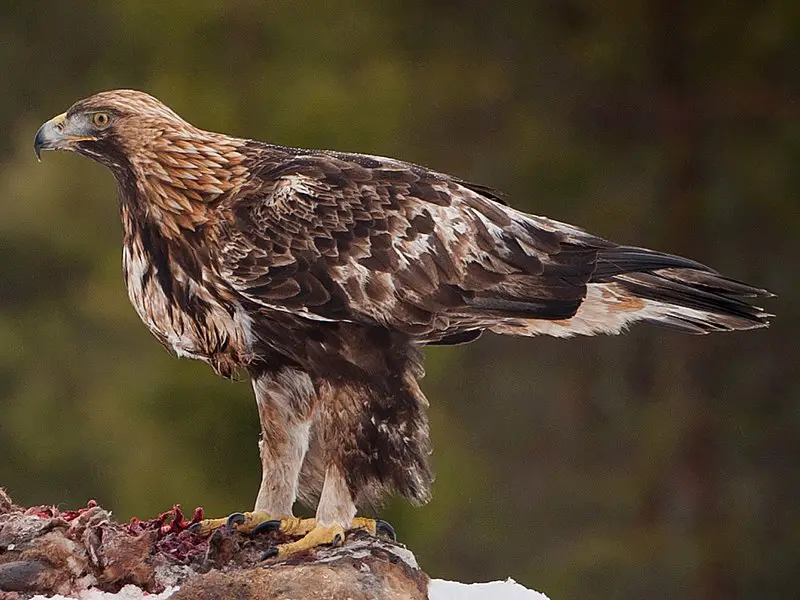
The Golden Eagle is an iconic bird of prey found throughout the northern hemisphere. It is a large, powerful raptor with dark brown feathers and lighter golden-brown plumage on its nape.
Immature eagles have white patches around their beaks, tails, and wings which they lose as they mature.
Its diet consists mostly of small mammals such as rabbits, hares, and marmots but can also include birds or reptiles depending on where it lives.
These majestic creatures are known for their remarkable strength in flight; using thermal updrafts to soar high into the sky searching for food or simply enjoying the view below them.
They are often seen soaring alone over open expanses looking out for potential threats from other predators like wolves or foxes that may encroach upon their territory.
Scientific classification:
| Kingdom | Animalia |
| Phylum | Chordata |
| Class | Aves |
| Order | Accipitriformes |
| Family | Accipitridae |
| Genus | Aquila |
| Species | A. chrysaetos |
12. Arctic Tern
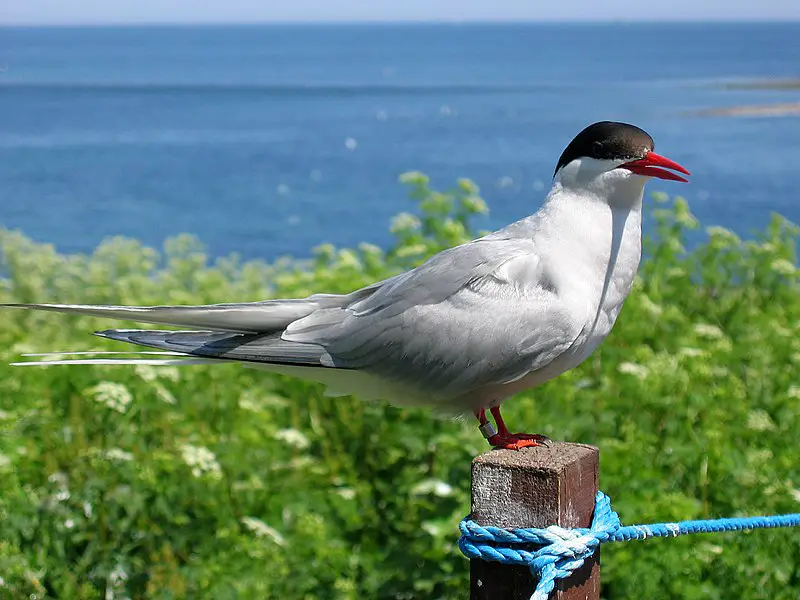
The Arctic tern is an incredible bird that displays a truly remarkable migratory behavior.
It breeds in the northern regions of Europe, Asia, and North America during summer before undertaking its migration along a convoluted route to reach the Antarctic for winter.
This species has adapted extremely well to its environment – it can fly very long distances while navigating with ease thanks to its excellent eyesight.
Furthermore, they can survive in temperatures as low as -40 degrees Celsius.
The Arctic Tern is also known for being one of the longest-living birds on Earth; some have been recorded living up to 30 years old.
Scientific classification:
| Kingdom | Animalia |
| Phylum | Chordata |
| Class | Aves |
| Order | Charadriiformes |
| Family | Laridae |
| Genus | Sterna |
| Species | S. paradisaea |
13. Bar-Tailed Godwit
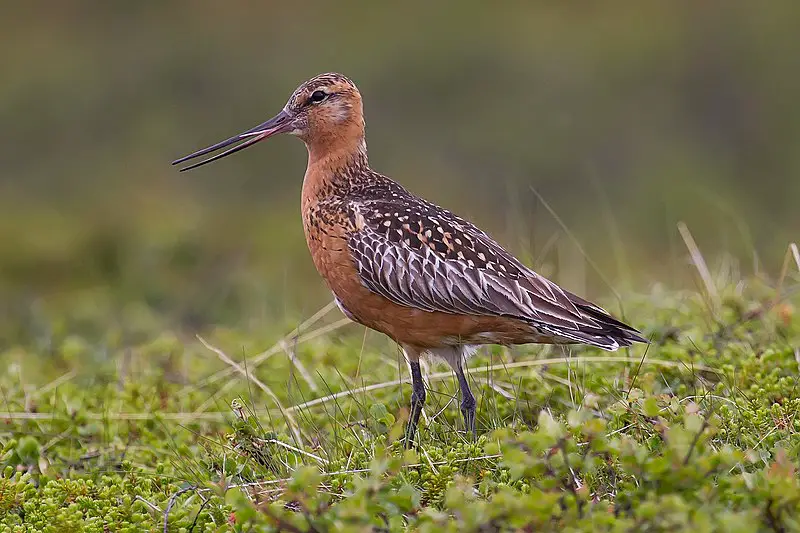
The bar-tailed godwit is a remarkable bird, both in its appearance and behavior. Its striking red breeding plumage stands out amongst the typical browns of other waders.
Long legs help it traverse coastal mudflats and estuaries where it forages on bristle worms and shellfish.
It has an upturned bill that gives it further distinction from other shorebirds.
Bar-tailed godwits breed on Arctic coasts stretching to Alaska during summer months before migrating south towards warmer temperate or tropical regions for wintering each year – quite incredible.
Despite their long migratory journeys, they are still considered a common species due to large numbers making these arduous trips annually, although some populations have experienced declines recently.
Scientific classification:
| Kingdom | Animalia |
| Phylum | Chordata |
| Class | Aves |
| Order | Charadriiformes |
| Family | Scolopacidae |
| Genus | Limosa |
| Species | L. lapponica |
14. Black Guillemot
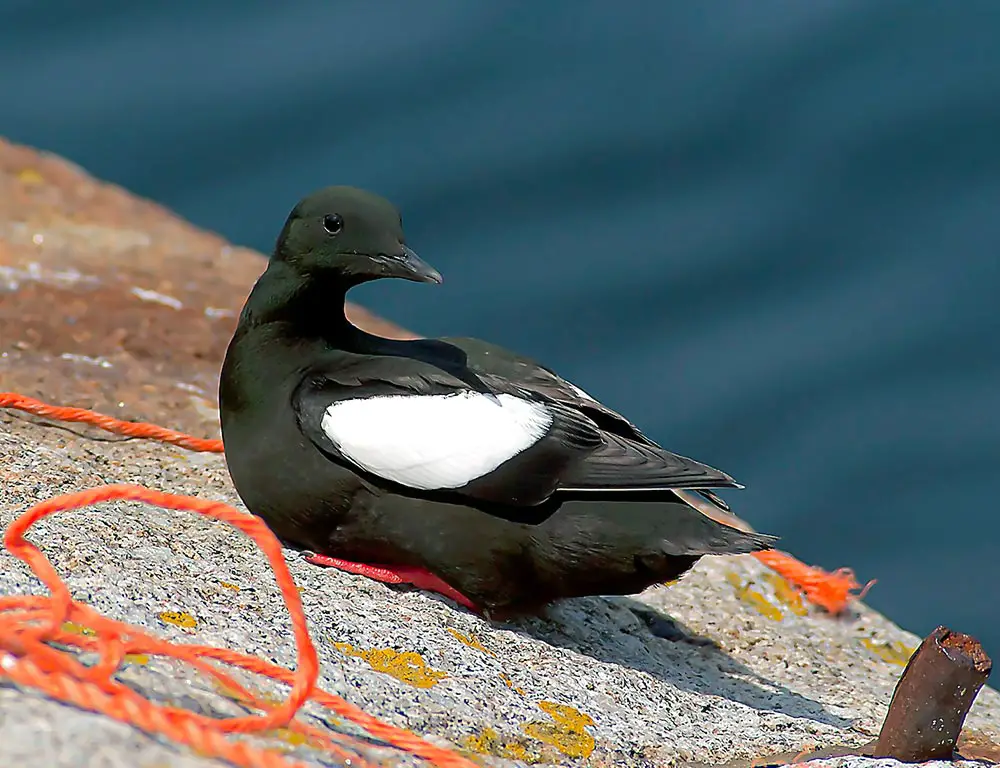
The Black Guillemot is a striking seabird found throughout the northern Atlantic coasts and eastern North American coasts. It has black feathers with white underparts, a red bill, and bright yellow feet.
They live around rocky shores, cliffs, and islands in single or small groups.
During winter months they migrate southwards from their high arctic breeding grounds to search for food sources such as fish eggs or invertebrates like shrimp that can be caught near shorelines.
Their diet also includes seeds and berries during summertime when they are nesting on coastal ledges creating burrows where they lay up to four pastel-colored eggs at once.
These amazing birds are very efficient swimmers using both their wings and webbed feet to propel themselves through water quickly while hunting prey.
Scientific classification:
| Kingdom | Animalia |
| Phylum | Chordata |
| Class | Aves |
| Order | Charadriiformes |
| Family | Alcidae |
| Genus | Cepphus |
| Species | C. grylle |
15. Brant
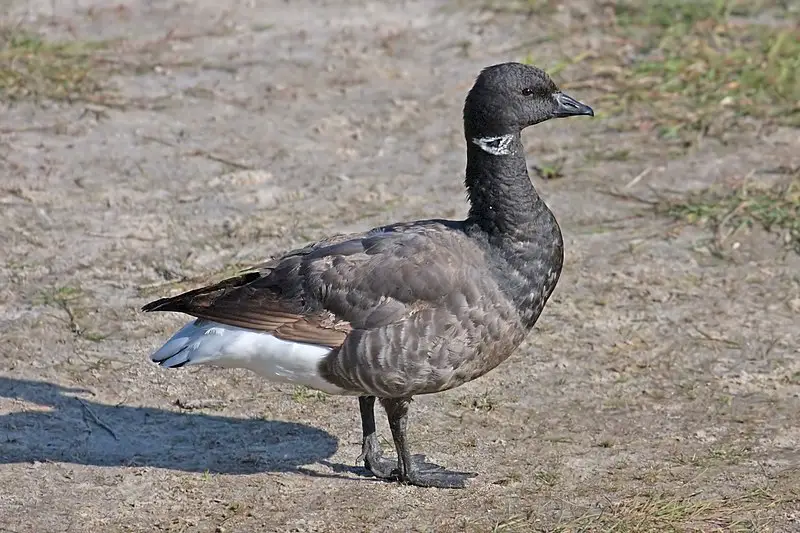
The Brent Goose, also known as the Brant or Bernicla goose, is a small species of waterfowl belonging to the genus Branta. It has three subspecies that live along temperate coastlines and breed on high-Arctic tundras.
This species can be identified by its short stubby bill, which measures between 22-26 inches long and 42-48 across its wingspan when fully grown.
They typically weigh between 0.88 – 2 lbs depending on location and seasonally changing diets they may consume while in flight or at rest stops during migration routes they take annually from one region to another.
The Brent Oilfield was named after this bird due to its abundance in certain areas near bodies of water where it would gather for safety during migrations over land formations such as mountain ranges or other geographical features that could otherwise become difficult obstacles if not avoided altogether.
Scientific classification:
| Kingdom | Animalia |
| Phylum | Chordata |
| Class | Aves |
| Order | Anseriformes |
| Family | Anatidae |
| Genus | Branta |
| Species | B. bernicla |
Also Featured In: Estuaries Birds, Birds that Live in Greenland
16. Hooded Crow
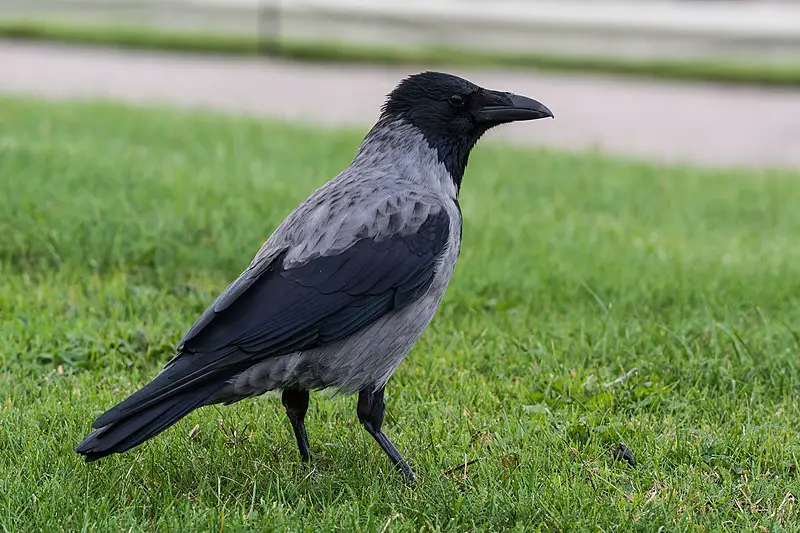
The Hooded Crow is a large bird native to Northern, Eastern, and Southeastern Europe as well as parts of the Middle East. Its feathers are an ash-grey color with black head, throat, wings, tail, and thigh feathers.
It has a black bill, eyes, and feet like other corvids in its genus. This species can adapt to multiple habitats from forests to agricultural land which makes them quite successful at finding food sources – whether it be plants or animals.
They are omnivorous birds so they will eat insects such as beetles along with small mammals like mice too.
Despite their fierce appearance due to their dark plumage, these crows have been known for being rather timid around humans but still make great pets if given enough time by owners who understand their behavior patterns properly.
Scientific classification:
| Kingdom | Animalia |
| Phylum | Chordata |
| Class | Aves |
| Order | Passeriformes |
| Family | Corvidae |
| Genus | Corvus |
| Species | C. cornix |
Also Featured In: Moscow Birds You Need to See,
17. Dunnock
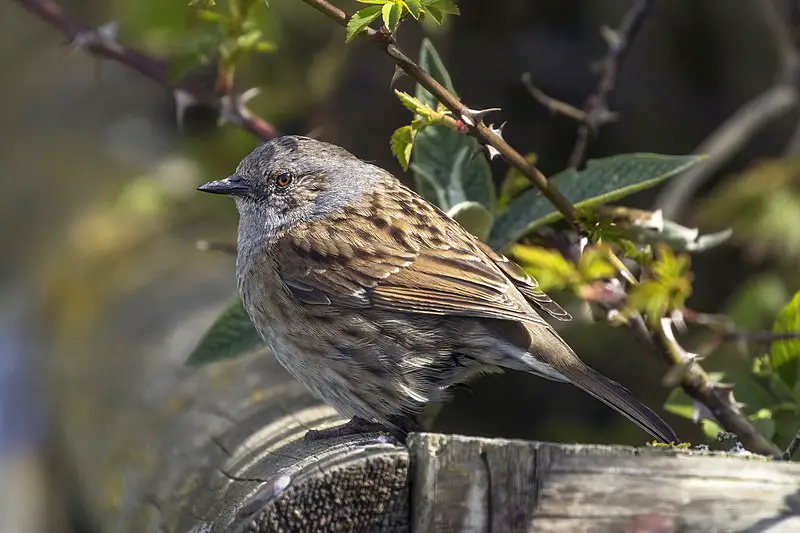
The Dunnock, also known as the Hedge Accentor, Hedge Sparrow, and Hedge Warbler, is a small passerine bird found in temperate climates of Europe and Asia.
It has even been successfully introduced to New Zealand. The Dunnock stands out amongst its family members as it can thrive in many different habitats beyond just mountainous areas – making it more widespread than other birds of its kind.
With greyish-brown upperparts and whitish underparts with brown streaks on them; they are easily distinguished from their fellow species by their distinctive saucy call.
Often seen searching for food on the ground or darting around bushes looking for insects and worms; these lively little birds make an attractive addition to any garden or parkland setting.
Scientific classification:
| Kingdom | Animalia |
| Phylum | Chordata |
| Class | Aves |
| Order | Passeriformes |
| Family | Prunellidae |
| Genus | Prunella |
| Species | P. modularis |
18. Black-Headed Gull
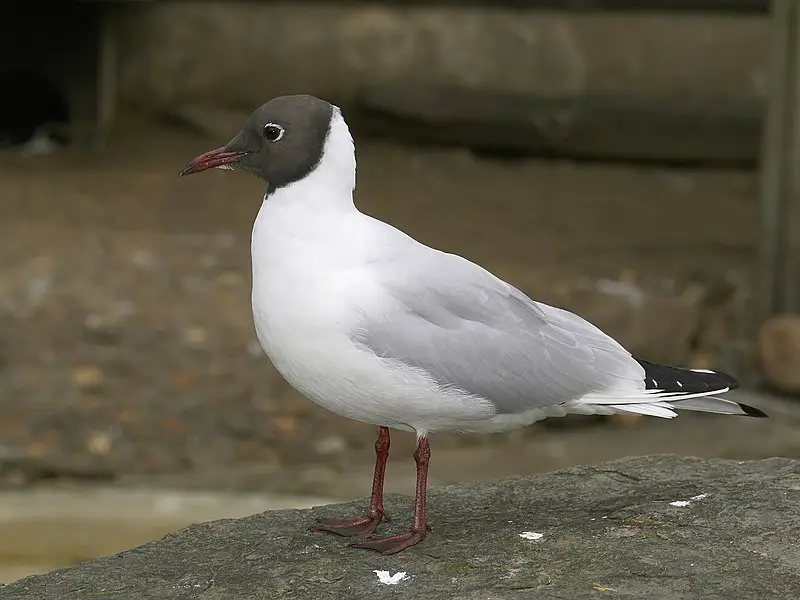
The Black-headed Gull is a small, migratory bird found in much of the Palearctic. It breeds mainly in Europe and coastal eastern Canada but can also be found further west in milder areas.
In North America, it’s known as the Common Black-headed Gull.
Its plumage consists of grey on top with white underneath, while its head has a distinctive black cap during breeding season which fades to brown outside of this period.
They are often seen by coastlines or near inland waters where they feed off fish, insects, and crustaceans caught either from the surface or underwater depending on their preference at that time.
Scientific classification:
| Kingdom | Animalia |
| Phylum | Chordata |
| Class | Aves |
| Order | Charadriiformes |
| Family | Laridae |
| Genus | Chroicocephalus |
| Species | C. ridibundus |
19. Accipitridae
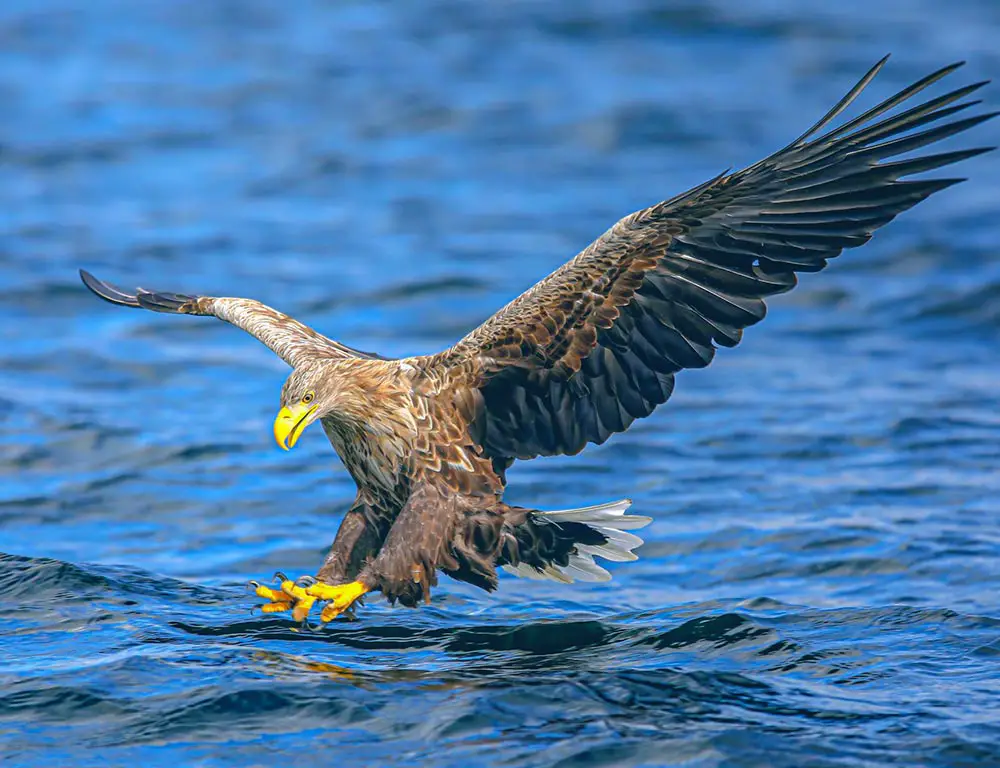
Accipitridae birds are a diverse family of raptors ranging in size from small to large. They have powerful hooked beaks which they use for hunting and tearing apart their prey, such as insects, medium-sized mammals, and carrion.
Some species even feed on fruit. These birds can be found all over the world, making them an incredibly successful group of predators.
Accipitridae are adaptable hunters with keen eyesight that helps them spot potential meals from far away distances.
Their sharp talons assist them in grasping onto their victims while feeding or defending themselves against enemies.
Not only do these avian creatures provide us with visual beauty but also help keep our ecosystems healthy by keeping pest populations under control.
Scientific classification:
| Kingdom | Animalia |
| Phylum | Chordata |
| Class | Aves |
| Order | Accipitriformes |
| Family | Accipitridae Vieillot, 1816 |
20. Tundra Swan
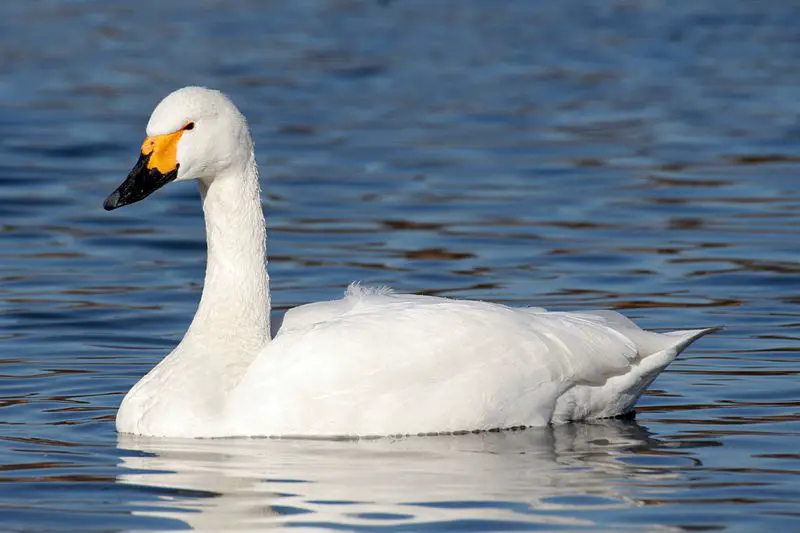
The Tundra swan is a small species of swan found in the Holarctic region. It can be divided into two separate taxa, Bewick’s Swan and Whistling Swan.
The former inhabits the Palearctic area while the latter resides near North America.
These birds are typically white with black bills and eyes but their legs vary from yellow to greyish-black depending on which subspecies they belong to.
They feed mainly on aquatic plants such as algae, roots, tubers, and various types of seeds.
During migration, these birds fly together in large flocks that may contain hundreds or even thousands of individuals at one time.
This majestic bird is an important part of many wetland ecosystems around the world where it plays a vital role in controlling vegetation growth as well as dispersing nutrients across its habitat range.
Scientific classification:
| Kingdom | Animalia |
| Phylum | Chordata |
| Class | Aves |
| Order | Anseriformes |
| Family | Anatidae |
| Genus | Cygnus |
| Species | C. columbianus |
Also Featured In: Common Slovakian Birds, Most Common Lake Birds
21. Balearic Shearwater
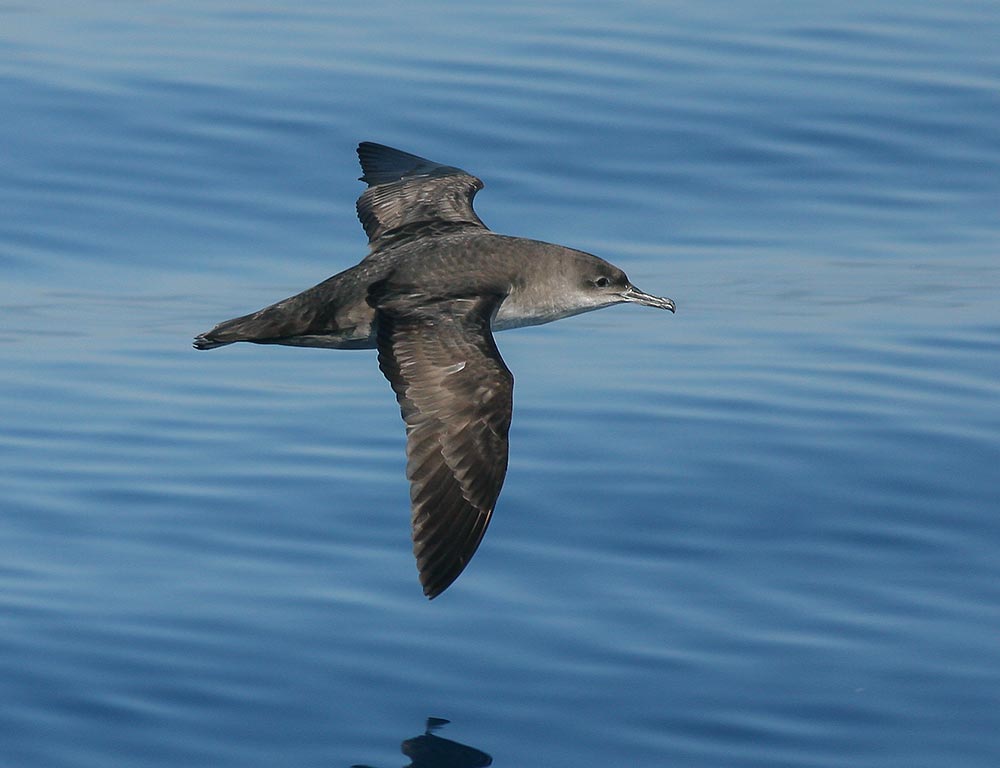
The Balearic shearwater is a medium-sized bird in the Procellariidae family, also known as puffins. It’s named after Mauretania, an old name for North Africa.
These birds can be found around islands and coasts of western Europe and northwest Africa.
They have long wings that help them to fly over vast distances during migration season from their breeding grounds to wintering areas farther south.
Their diet consists mainly of small fish which they catch by diving into the sea with great agility or plucking out of shallow waters while swimming on the surface.
When not mating or raising chicks, these birds live solitary lives at sea but gather together when feeding or roosting on land near coastal cliffsides and beaches where they nest in burrows underground lined with vegetation debris and feathers.
Scientific classification:
| Kingdom | Animalia |
| Phylum | Chordata |
| Class | Aves |
| Order | Procellariiformes |
| Family | Procellariidae |
| Genus | Puffinus |
| Species | P. mauretanicus |
22. European Herring Gull
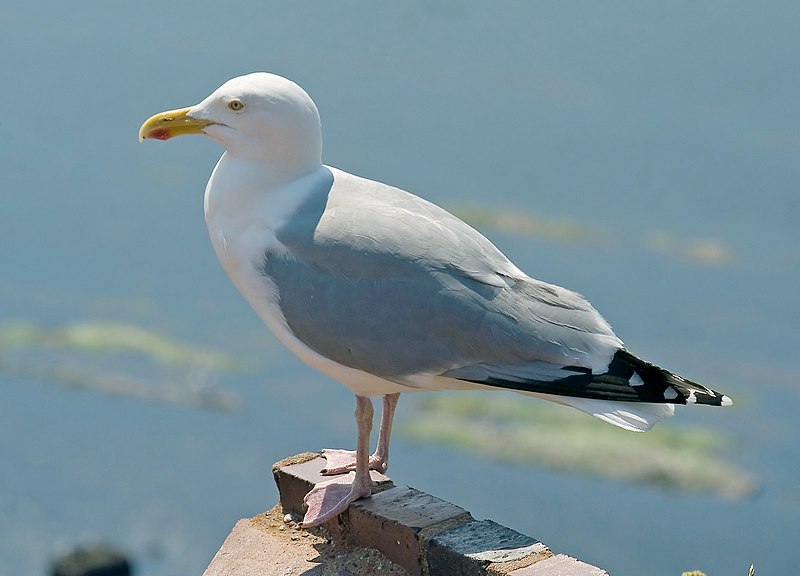
The European herring gull is one of the most recognizable birds, easily spotted along the shorelines of Western Europe.
It has a wingspan of up to 66 cm long and can be found nesting across Northern Europe, Central Europe, Eastern Europe, and Scandinavia.
During colder months many European herring gulls migrate further south in search of warmer temperatures which allows them to survive better during wintertime.
As scavengers they often take advantage of human debris or waste as food sources near populated areas such as beaches, parks, and cities; however, their diet also consists of fish, insects, and other small animals that live near coastal regions.
Despite being common in some parts of its range this species may have experienced population declines due to habitat loss caused by human activities like urbanization but remains abundant in others thanks to conservation efforts implemented over time by local authorities all around the world.
Scientific classification:
| Kingdom | Animalia |
| Phylum | Chordata |
| Class | Aves |
| Order | Charadriiformes |
| Family | Laridae |
| Genus | Larus |
| Species | L. argentatus |
Also Featured In: European Birds, Amsterdam Birds You Should Know
23. Hen Harrier
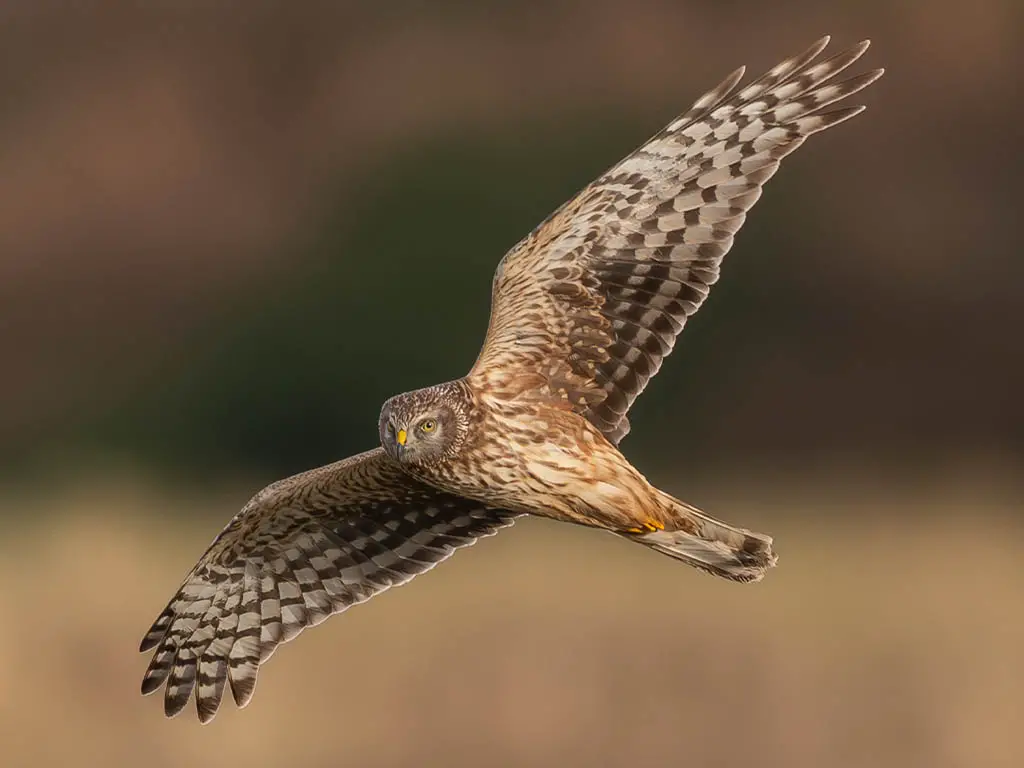
The Hen Harrier is a majestic bird of prey that breeds across Eurasia. It has the distinction of being one of the few birds to hunt free-roaming poultry, hence its name.
During winter months it migrates southwards towards Southern Europe and temperate Asia in search of more favorable climates than what can be found in its northern nesting grounds.
In milder regions like Great Britain and France, these raptors may remain year-round where they are often spotted hunting over higher ground areas such as meadows or moorlands.
The hen harrier is an incredible sight with its dark wingspan soaring through the air while searching for small mammals or reptiles on which it feeds.
Scientific classification:
| Kingdom | Animalia |
| Phylum | Chordata |
| Class | Aves |
| Order | Accipitriformes |
| Family | Accipitridae |
| Genus | Circus |
| Species | C. cyaneus |
24. Red Kite
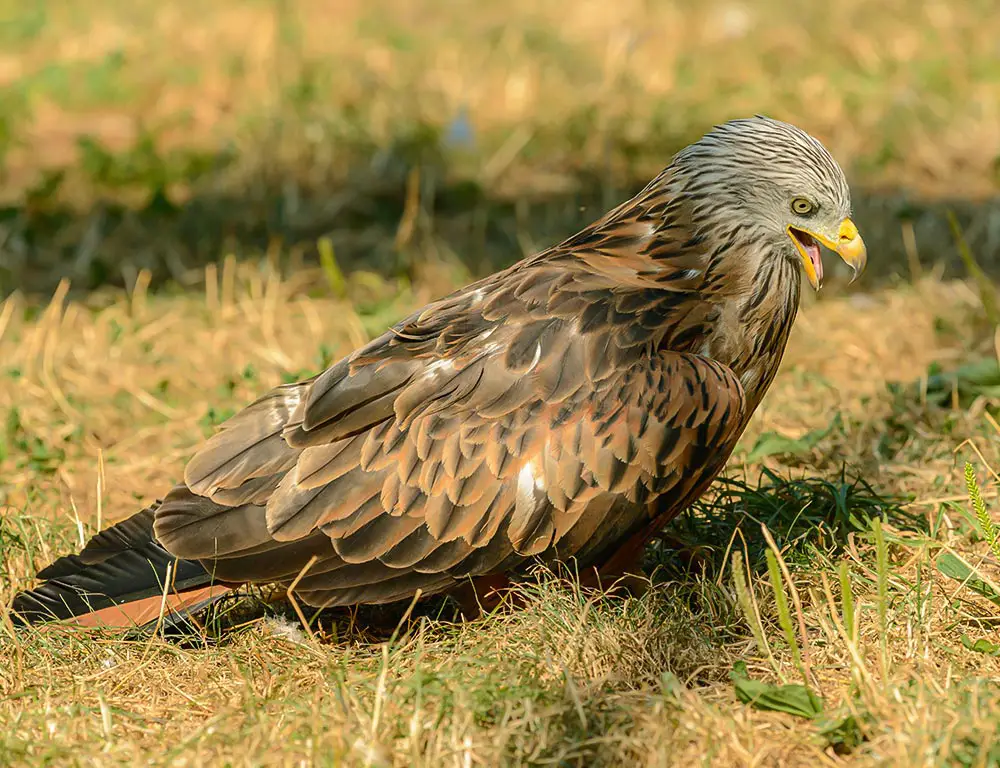
The Red Kite is a magnificent bird of prey, belonging to the family Accipitridae. It can be found in western Europe and northwest Africa where it breeds, while also occurring occasionally in northern Iran.
These birds are medium-large size with wingspans ranging from 125 – 170 cm wide. They have reddish brown plumage on their upperparts and pale gray underneath.
The Red Kite feeds mainly on small mammals, carrion, and insects which they hunt for by soaring through the air using thermals to gain altitude before diving down onto its prey.
Furthermore, this species has adapted well to human presence since it often scavenges near roadsides or rubbish dumps as an easy source of food.
All things considered, these majestic creatures make up a beautiful part of our natural environment that should not go unnoticed.
Scientific classification:
| Kingdom | Animalia |
| Phylum | Chordata |
| Class | Aves |
| Order | Accipitriformes |
| Family | Accipitridae |
| Genus | Milvus |
| Species | M. milvus |
25. Oystercatchers
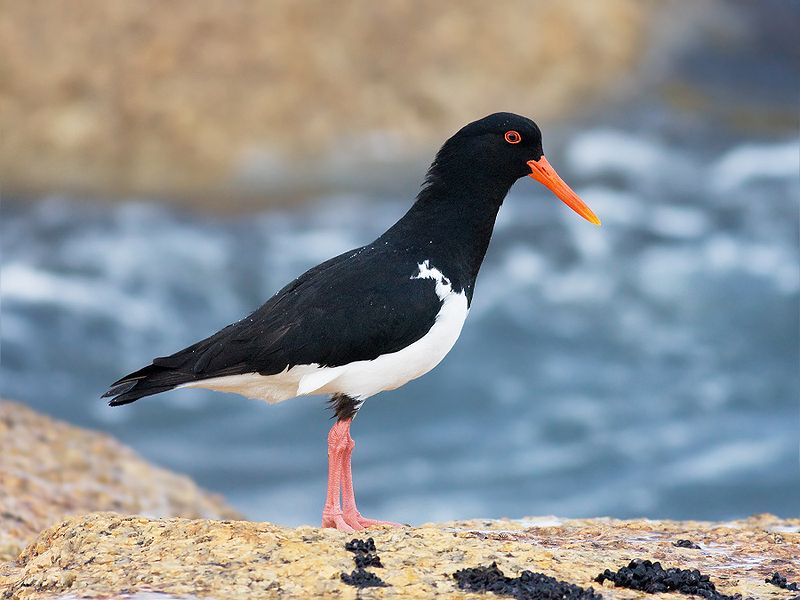
Oystercatchers are a family of waders forming the Haematopodidae, with one genus; Haematopus.
They live in coastal regions around the world excluding both polar and some tropical areas of Africa & South East Asia.
Eurasian, South Island & Magellanic oystercatcher species also breed far inland – breeding grounds being found much deeper than other members of the family.
They have long beaks used to feed on molluscs such as mussels, clams, and oysters which they crack open using their strong bills.
Oystercatchers are usually quite vocal birds making various loud calls when disturbed or alarmed.
The males tend to display more brightly colored plumage compared to females who share similar brown/black hues for camouflage purposes during nesting season.
Scientific classification:
| Kingdom | Animalia |
| Phylum | Chordata |
| Class | Aves |
| Order | Charadriiformes |
| Suborder | Charadrii |
| Family | Haematopodidae Bonaparte, 1838 |
| Genus | Haematopus Linnaeus, 1758 |
26. Red-Throated Loon
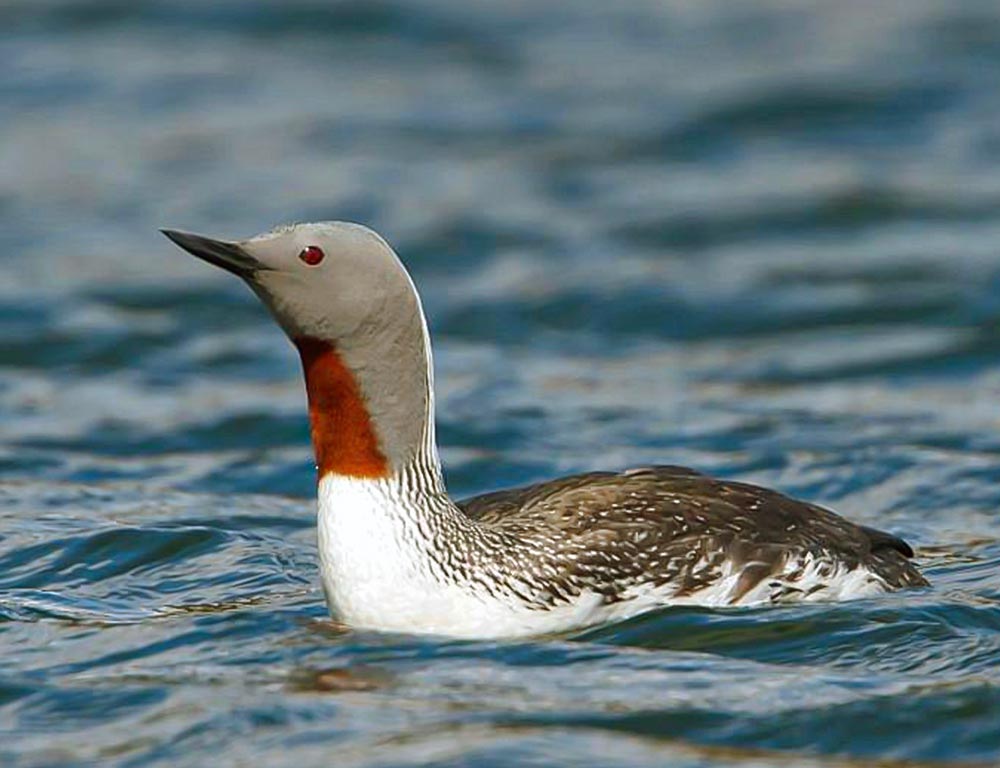
The Red-throated Loon is a migratory bird found in the northern hemisphere, with its breeding grounds primarily located in Arctic regions and wintering spots near coastal waters.
With an average length of 55 – 67 cm (22 – 26 inches), it’s the smallest member of the loon or diver family.
Its namesake comes from its bright red throat patch which contrasts against its white underside and grey back.
This species has adapted to life on icy seas; they are strong swimmers with powerful wings for long flights over open water when migrating seasonally.
Their diet consists mostly of fish but can also include crustaceans, molluscs, amphibians, and insects depending on availability.
Scientific classification:
| Kingdom | Animalia |
| Phylum | Chordata |
| Class | Aves |
| Order | Gaviiformes |
| Family | Gaviidae |
| Genus | Gavia |
| Species | G. stellata |
27. Corn Crake
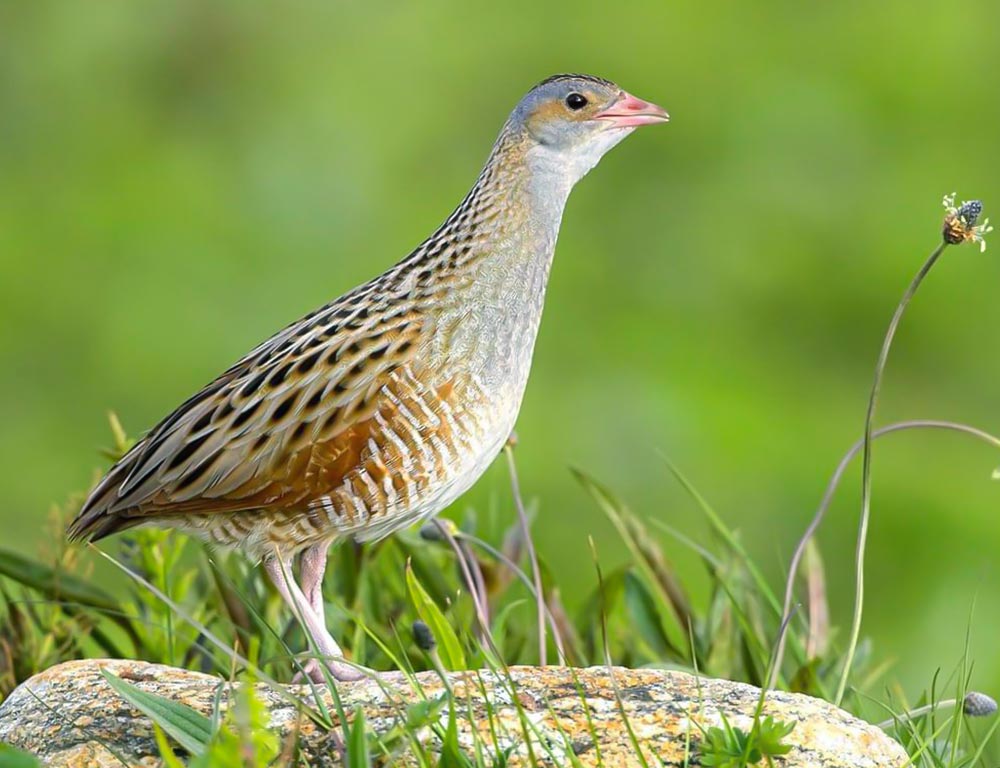
The Corn Crake is a species of rail that inhabits Europe and Asia, migrating to Africa for the winter.
It’s medium-sized with buff or grey streaked brownish black upperparts and blue-grey underparts that are decorated with rust-colored bars along its flanks and undertail.
They prefer moist meadows, grasslands, marshes, bogs, and moorlands where they can find their food sources such as seeds, leaves shoots insects worms spiders, etc.
In the summer it may be heard singing from tall vegetation at night when looking for mates but during the daytime, it will hide in thick cover making it difficult to spot.
The corn crake has been listed by IUCN as near threatened due to Conservation efforts that have helped increase numbers but ongoing threats such as habitat loss remain an issue so continued effort must be made if this unique bird is to survive into future generations.
Scientific classification:
| Kingdom | Animalia |
| Phylum | Chordata |
| Class | Aves |
| Order | Gruiformes |
| Family | Rallidae |
| Genus | Crex Bechstein, 1803 |
| Species | C. crex |
28. Cormorants
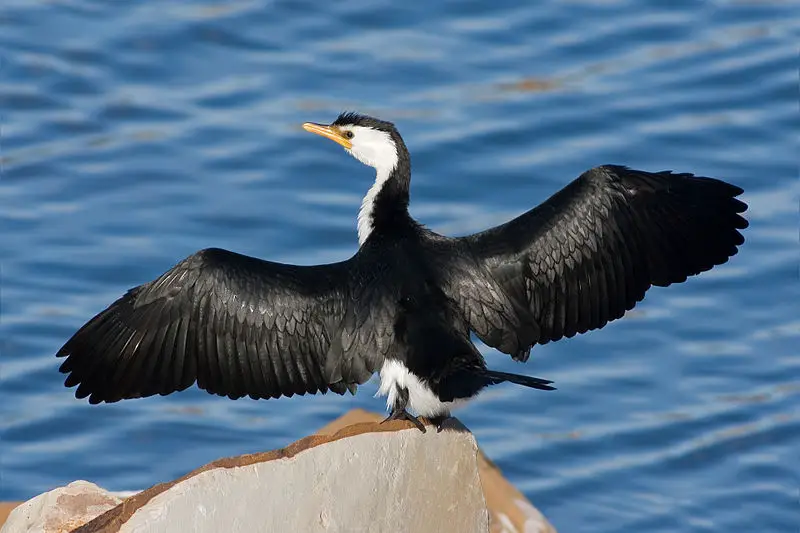
Cormorants are a family of aquatic birds found around the world. They include 40 species, such as great cormorants and common shags.
In Britain, these two species are the most commonly seen in their natural habitats.
Cormorants have long necks, and webbed feet and can be identified by their glossy black feathers which they use to help them swim through water with ease as they hunt for food like fish or crustaceans.
They have an impressive wingspan often reaching up to five feet across when fully extended.
Despite being strong swimmers, these birds also enjoy spending time perched on rocks near rivers or shorelines where they will preen themselves to keep clean and dry during cooler weather conditions.
Scientific classification:
| Kingdom | Animalia |
| Phylum | Chordata |
| Class | Aves |
| Order | Suliformes |
| Family | Phalacrocoracidae Reichenbach, 1850 |
29. Bitterns
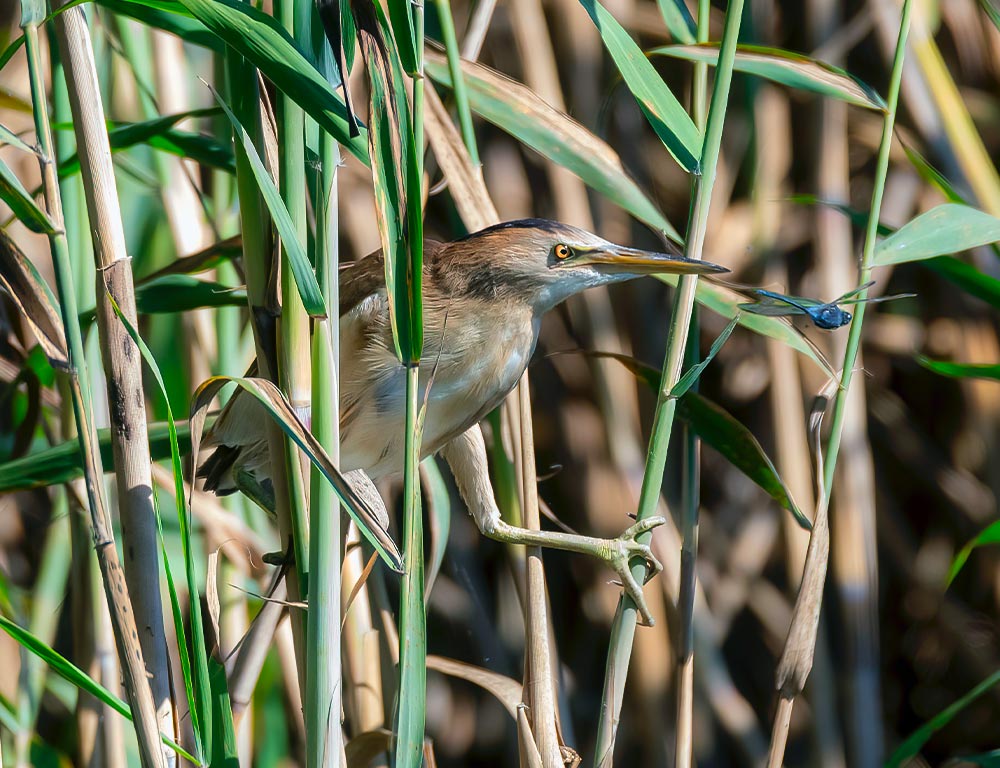
Bitterns are a type of heron, belonging to the Ardeidae family. They have shorter necks and tend to be more secretive than other members of this group.
These birds can usually be found near reed beds or wetlands, where they make their distinctive ‘booming’ call as part of their mating ritual.
Bitterns feed on insects, fish, and amphibians that inhabit these areas – catching them with their long pointed bills.
Although bitterns are well camouflaged due to their brown-and-black striped feathers when standing still among reeds, they will fly away quickly if disturbed by humans nearby.
Scientific classification:
| Kingdom | Animalia |
| Phylum | Chordata |
| Class | Aves |
| Order | Pelecaniformes |
| Family | Ardeidae |
| Subfamily | Botaurinae Reichenbach, 1850 |
30. Common Starling

The Common Starling is a medium-sized passerine bird that belongs to the Starling family. It has glossy black plumage with a metallic sheen, and at certain times of year, it can be speckled with white.
The bill and legs are typically pink or black depending on the season, while its length measures about 8 inches long.
Its diet consists mainly of insects but also includes small fruits and seeds as well as some human food waste.
They live in large flocks which protects predators, although they can become quite aggressive when defending their nesting sites during breeding seasons.
Overall, this species is highly adaptable and widely distributed across many parts of Europe making them one of the most successful birds in the region today.
Scientific classification:
| Kingdom | Animalia |
| Phylum | Chordata |
| Class | Aves |
| Order | Passeriformes |
| Family | Sturnidae |
| Genus | Sturnus |
| Species | S. vulgaris |
31. Auk
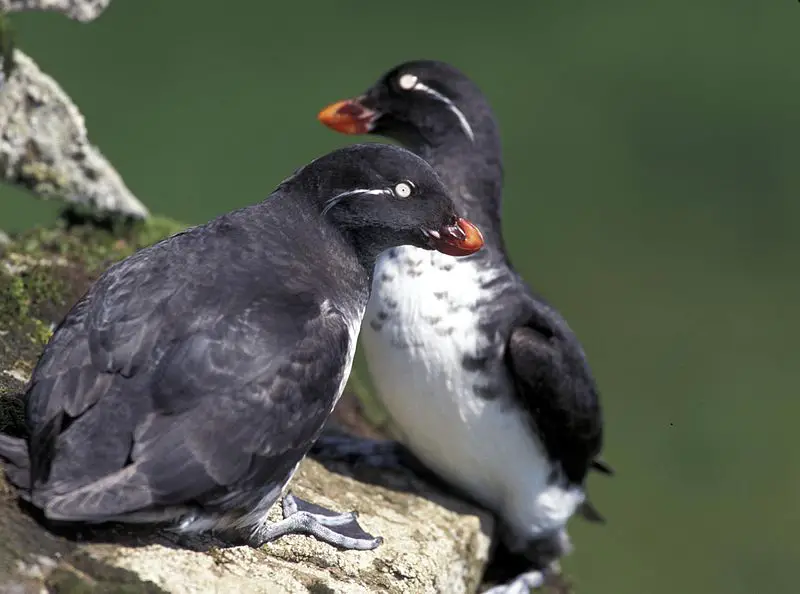
Auk is a family of birds from the order Charadriiformes. They are excellent swimmers and divers, able to “fly” through water. There are 25 species divided into 11 genera in this family, with the great auk being extinct.
Auks can fly but their walking appears awkward due to their thick feathers that make them heavy on land.
The most notable feature of these aquatic birds is the large bills they possess which helps them catch fish underwater.
Apart from feeding on sea creatures like squid or shrimp, auks also feed on grains found near shorelines during winter months when food sources become scarce in open waters.
Scientific classification:
| Kingdom | Animalia |
| Phylum | Chordata |
| Class | Aves |
| Order | Charadriiformes |
| Suborder | Lari |
| Family | Alcidae Leach, 1820 |
32. Long-Eared Owl
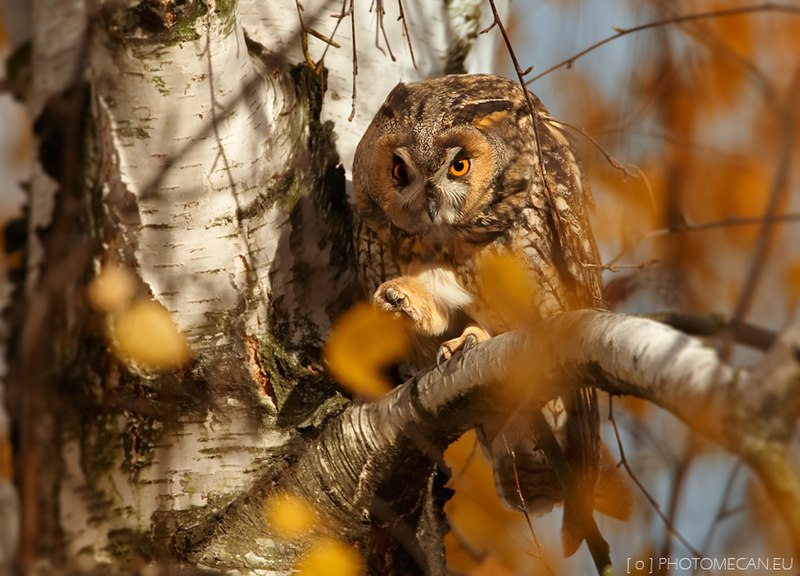
The Long-eared Owl is a medium-sized species of owl with an extensive breeding range that spans across Europe and the Palearctic.
It has two distinct features, its long ears and yellow eyes, which can be seen during the day or at night due to its excellent vision.
Its diet consists mainly of small mammals such as voles and mice but it will also eat birds if given the opportunity.
During winter months they may migrate south in search of food because there is less prey available in cold temperatures.
The Long-eared Owl prefers open habitats like meadows, fields, or wetlands but sometimes uses forests too when hunting for food.
This makes them quite adaptable since they have no restrictions on where they choose to live.
Scientific classification:
| Kingdom | Animalia |
| Phylum | Chordata |
| Class | Aves |
| Order | Strigiformes |
| Family | Strigidae |
| Genus | Asio |
| Species | A. otus |
33. Roseate Tern
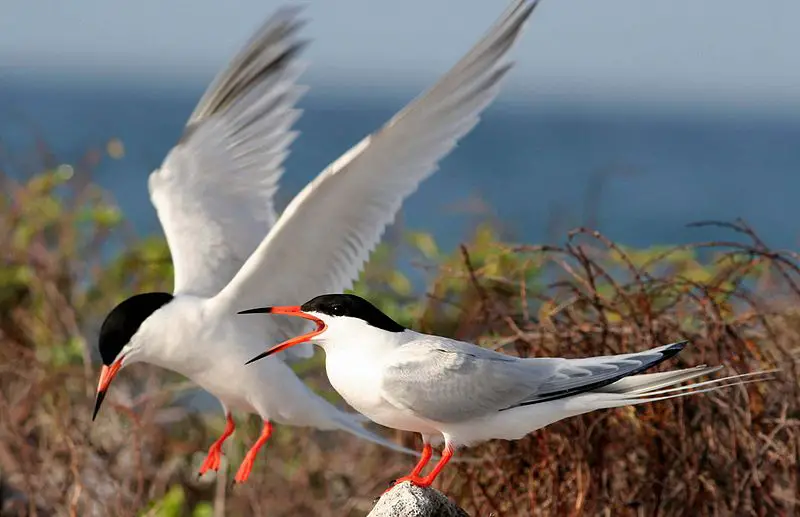
The Roseate Tern (Sterna dougallii) is a species of bird that belongs to the family Laridae. It gets its name from its pink breast in breeding plumage, which gives it a “roseate” appearance.
The genus Sterna comes from Old English and means “tern” while the specific dougallii refers to Scottish physician and collector Dr Peter McDougall (1777–1814).
This species was first described by George Montagu in 1813.
They are most common near coasts but can be found further inland occasionally too. These birds mainly feed on small fish like sardines, anchovies, or herring as well as crustaceans when available.
They typically lay two eggs each year during their breeding season between May and September before migrating south for winter months.
Scientific classification:
| Kingdom | Animalia |
| Phylum | Chordata |
| Class | Aves |
| Order | Charadriiformes |
| Family | Laridae |
| Genus | Sterna |
| Species | S. dougallii |
Also Featured In: Birds that Live in the Ocean , Birds of Farne Islands
34. Greater White-Fronted Goose
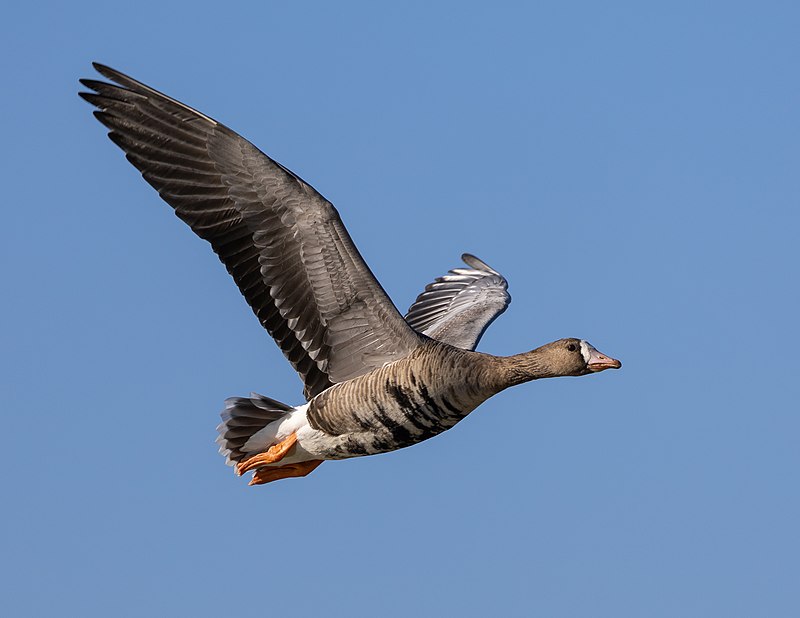
The Greater White-fronted Goose is a species of waterfowl native to the subarctic regions of North America and Eurasia.
Its distinguishing feature is the large white patch that runs from its bill down to its throat, earning it its Latin name “albifrons” which translates as ‘white forehead’.
This bird can grow up to 28 inches in length with a wingspan of 50 inches and weighs 2 lbs. It feeds mainly on plant material such as grasses, sedges, grains, and berries.
The Greater White-fronted Goose also likes areas near rivers or lakes where they forage for food during their annual spring migration across continents ranging from Alaska to Russia.
Scientific classification:
| Kingdom | Animalia |
| Phylum | Chordata |
| Class | Aves |
| Order | Anseriformes |
| Family | Anatidae |
| Genus | Anser |
| Species | A. albifrons |
35. Common Ringed Plover
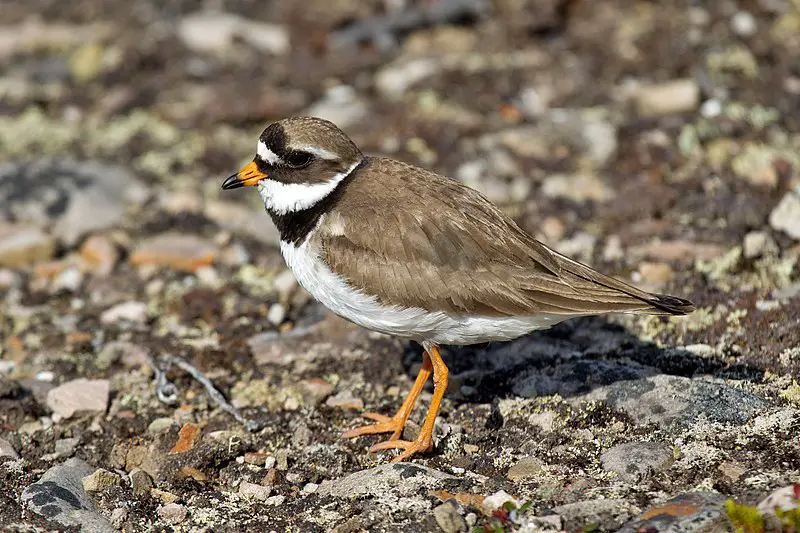
The Common Ringed Plover is a small migratory bird found in Arctic Eurasia. It has yellowish feathers and its Latin name, Charadrius hiaticula, means ‘bird of ravines’.
This species breeds on beaches and tundra during the northern summer months before flying south when winter arrives.
Its diet consists mostly of insects which it catches by running along the shoreline or through shallow water with wings spread open to create a shadow that helps catch prey.
The common ringed plover nests in short grasses near the water’s edge where they lay two eggs per clutch which hatch within three weeks.
These birds are highly territorial so will often defend their patch fiercely against competitors.
Scientific classification:
| Kingdom | Animalia |
| Phylum | Chordata |
| Class | Aves |
| Order | Charadriiformes |
| Family | Charadriidae |
| Genus | Charadrius |
| Species | C. hiaticula |
36. Eurasian Whimbrel
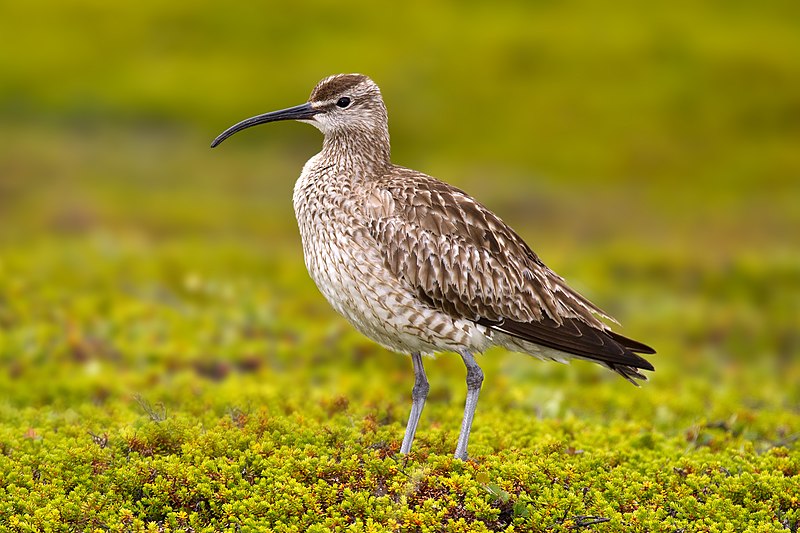
Eurasian Whimbrels are a species of wading bird commonly found in subarctic regions of Europe and Asia.
They have white rumps, long curved bills, brown wings, and backs with light streaking on the lower breast.
These birds feed mainly on crustaceans, mollusks, or worms they find while probing in the mud during low tide.
During breeding season they can be seen nesting near coastal areas or wetlands where food is plentiful.
This species has recently been split from Hudsonian whimbrels but some authorities still consider them to be one species due to their similarities which include migration patterns as well as habitat preferences.
Eurasian whimbrels are an important part of many ecosystems because they help control insect populations by eating larvae before they can cause damage to crops or vegetation nearby.
Scientific classification:
| Kingdom | Animalia |
| Phylum | Chordata |
| Class | Aves |
| Order | Charadriiformes |
| Family | Scolopacidae |
| Genus | Numenius |
| Species | N. phaeopus |
37. White-Tailed Eagle
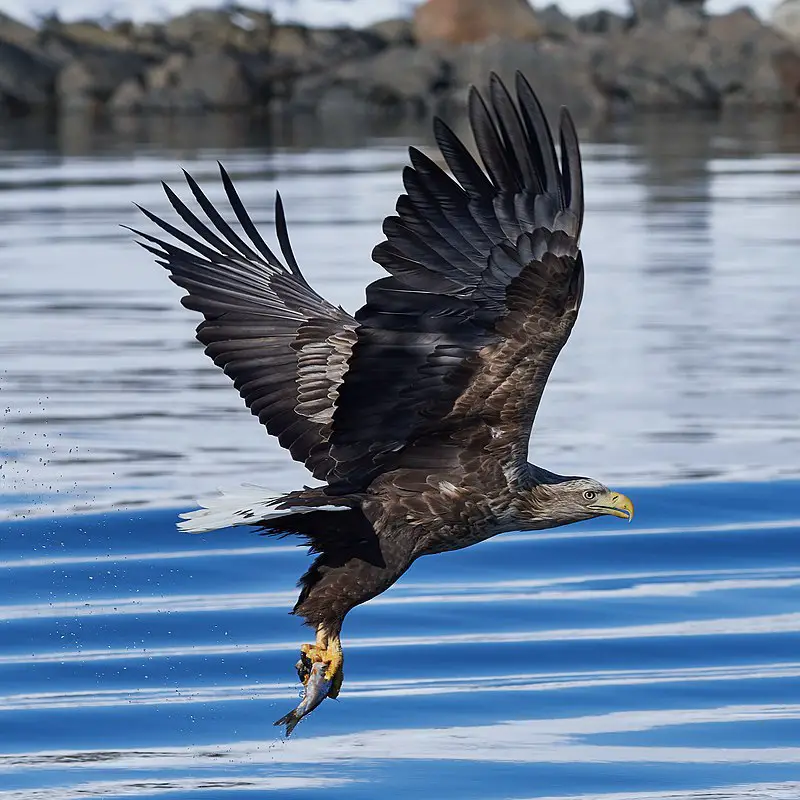
The white-tailed eagle is an impressive species of sea eagle found across temperate Eurasia. This majestic bird belongs to the family Accipitridae, which includes hawks, kites, and harriers.
It has a wingspan of up to 2.5 meters and can weigh 4 kilograms or more.
The plumage varies in color from dark brown above with a paler head and neck while its tail is pure white – hence its name.
They feed mainly on fish but will also take small mammals, birds, and carrion when available.
White-tailed eagles are solitary by nature but form pairs during nesting season typically near bodies of water such as lakes or coasts where they build large stick nests on trees or cliffsides for their young ones to hatch safely in peace.
Scientific classification:
| Kingdom | Animalia |
| Phylum | Chordata |
| Class | Aves |
| Order | Accipitriformes |
| Family | Accipitridae |
| Genus | Haliaeetus |
| Species | H. albicilla |
38. Eurasian Curlew
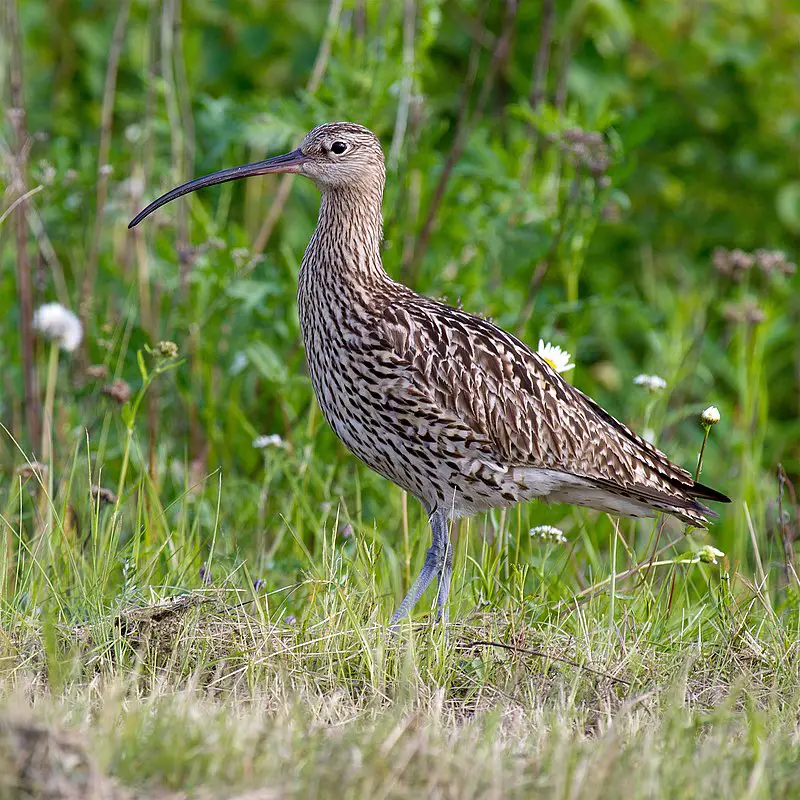
The Eurasian curlew is a wader bird belonging to the Scolopacidae family. It has an incredibly wide range, breeding across temperate Europe and Asia. This species can be easily identified by its long, curved bill and distinctive white underparts.
The male’s head typically appears striped while the female’s tends to be mottled brown in coloration with dark streaks on her neck and breast feathers.
With wingspans of almost two feet, these birds are quite large compared to other members of their genus.
Despite being so widespread they remain vulnerable due to ongoing habitat loss or degradation as well as hunting practices along migration routes or during wintering grounds visits.
Scientific classification:
| Kingdom | Animalia |
| Phylum | Chordata |
| Class | Aves |
| Order | Charadriiformes |
| Family | Scolopacidae |
| Genus | Numenius |
| Species | N. arquata |
39. Swallows
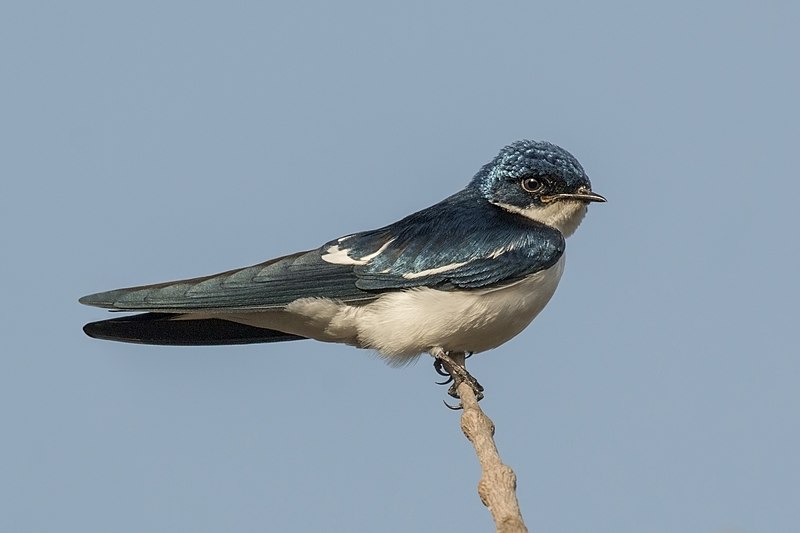
Swallows are small songbirds found around the world on all continents, even Antarctica. They have a distinctive appearance and are highly adapted to aerial feeding with their long wings and forked tails.
There are an estimated 90 species of swallows in 19 different genera, making them one of the most widespread bird families on earth.
The barn swallow is perhaps the most well-known species among these birds due to its presence near human settlements across Europe; they’re so ubiquitous that “swallow” has become synonymous with this particular type of bird there.
Swallows also play important roles in ecology as insectivores; some species migrating vast distances every year between summer breeding grounds and wintering locations.
Scientific classification:
| Kingdom | Animalia |
| Phylum | Chordata |
| Class | Aves |
| Order | Passeriformes |
| Suborder | Passeri |
| Family | Hirundinidae Rafinesque, 1815 |
40. Fieldfare
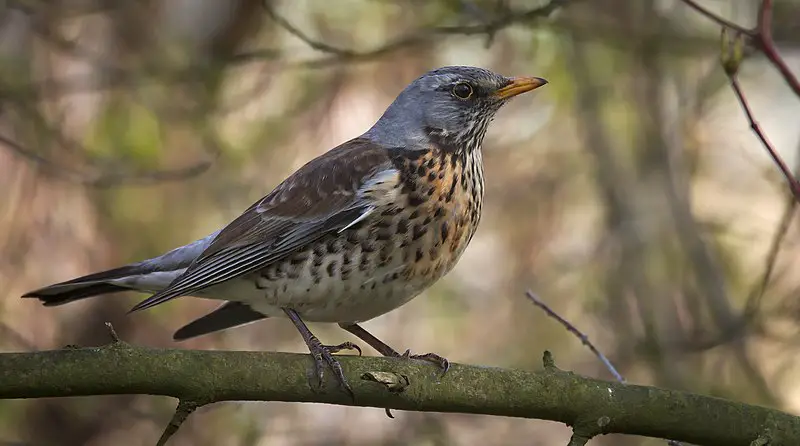
The Fieldfare is a member of the thrush family, known for its vibrant plumage. It breeds in woodlands and scrub across Europe, but it’s a rare breeder in Britain & Ireland.
During winter months it migrates southwards to countries such as North Africa and the Middle East where winters are milder.
The bird has grey-brown upperparts with black spots on its wings and tail feathers; these contrast sharply against its off-white underparts which have orange streaks running along them.
When threatened or startled they give an alarm call that sounds like ‘tchack’. This species feeds mainly on berries from shrubs during autumn and winter before returning to their breeding grounds in springtime.
Scientific classification:
| Kingdom | Animalia |
| Phylum | Chordata |
| Class | Aves |
| Order | Passeriformes |
| Family | Turdidae |
| Genus | Turdus |
| Species | T. pilaris |
41. Sandgrouse
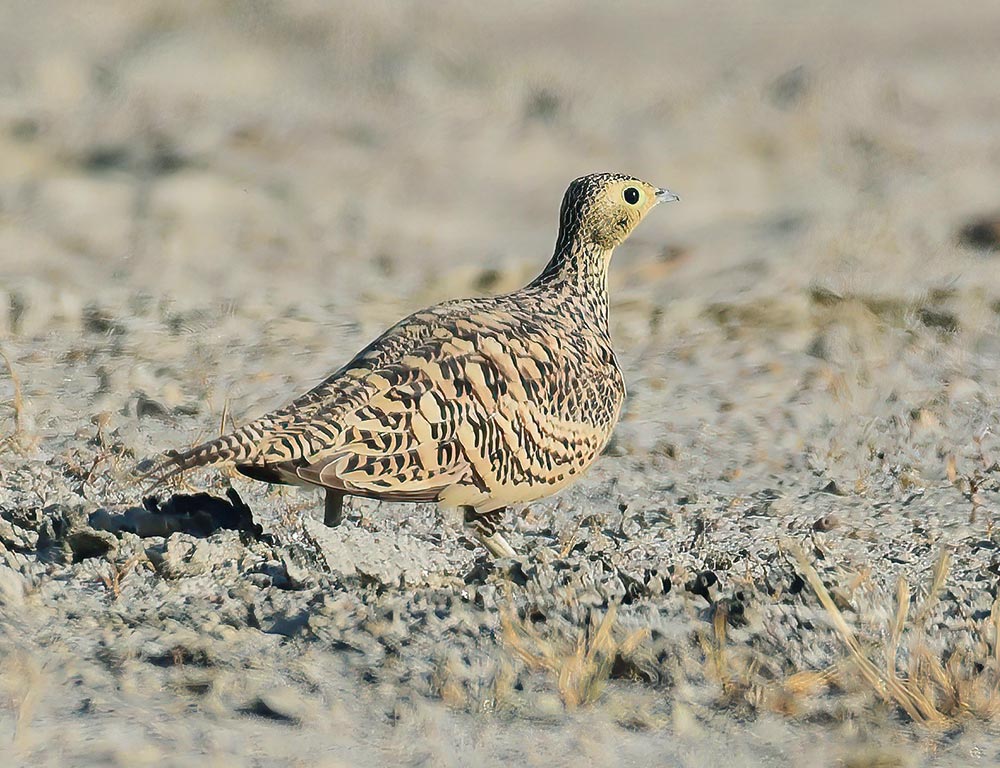
Sandgrouse are birds of the order Pterocliformes, found mainly in Africa and Asia. There are sixteen species belonging to two genera – Syrrhaptes from central Asia and Pterocles from Africa and other Asian countries.
They inhabit treeless areas such as deserts, steppes, scrublands, or savannas and tend to be ground-dwelling birds that feed on seeds.
Sandgrouse have adapted special features for survival in their harsh environment.
They possess well-developed feet with four toes used for walking over hot sand while keeping their body temperature cool at all times by regulating heat loss through their legs.
Their feathers also act like a sponge helping them absorb water before flying long distances back home where they then expel it using specialized glandular secretions located near the wings so that chicks can drink directly from an adult’s breast plumage.
Scientific classification:
| Kingdom | Animalia |
| Phylum | Chordata |
| Class | Aves |
| Clade | Columbimorphae |
| Order | Pterocliformes Huxley, 1868 |
| Family | Pteroclidae Bonaparte, 1831 |
42. Divers
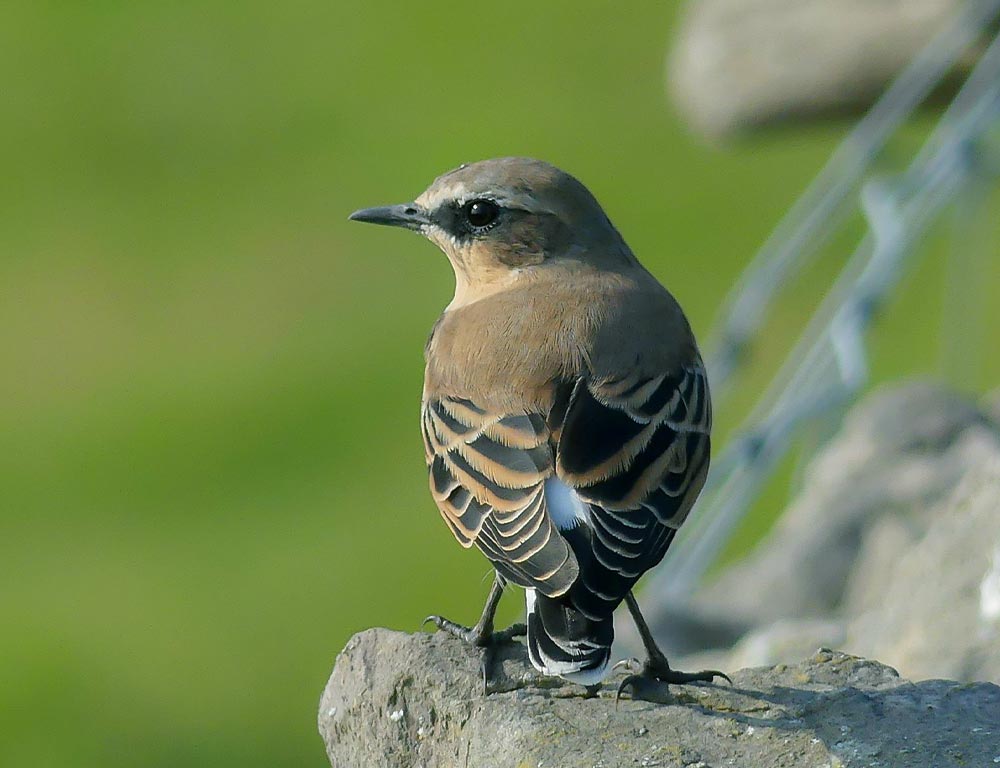
Divers are a type of sea bird that live in both marine and freshwater habitats. They have short, stocky bodies with long, pointed wings and webbed feet which allow them to dive underwater for food such as fish or mollusks.
Their feathers are usually dark gray or brown on top, while the underside is typically lighter gray or white. Divers can be found all over the world near shorelines where they feed off of small prey items like insects and crustaceans.
While some divers may migrate seasonally between different regions depending on environmental conditions, others remain in one area year-round due to their ability to adapt easily.
Despite threats from habitat loss and pollution, these birds continue to thrive thanks to conservation efforts that help protect their natural environments.
43. Gruiformes
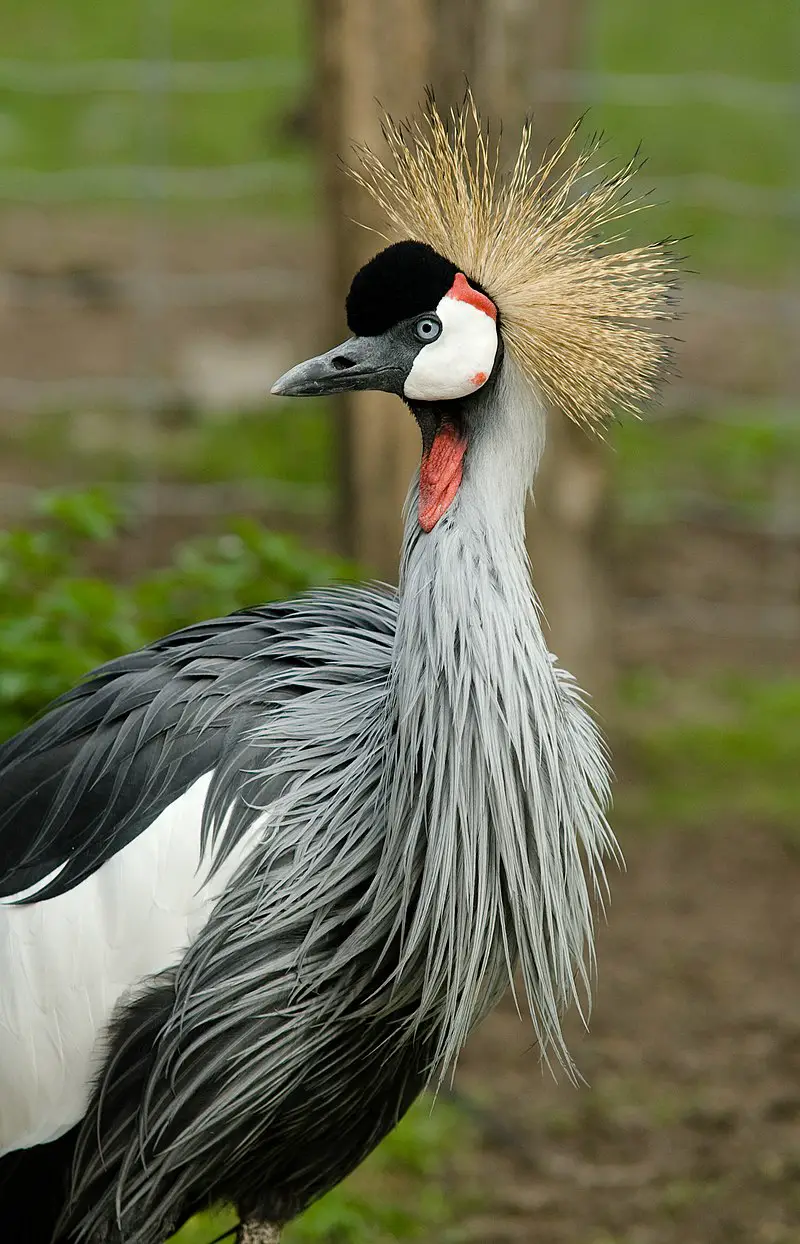
The Gruiformes is an order of birds which contains a large variety of families, both living and extinct. They are found all over the world in many different habitats, including wetlands and grasslands.
The name comes from Latin for “crane-like” due to their similar appearance to cranes. Many members of this group have long legs adapted for wading or running on land depending on the species.
They also typically have long beaks used for hunting prey such as insects and small animals like fish, frogs, and lizards.
Other traits commonly shared by these birds include strong wings with broad flight feathers that help them soar through the air when migrating or searching food sources during winter months.
In addition to these physical characteristics, some Gruiformes also possess vocalizations unique among other bird orders – making them easily recognizable even at great distances.
Scientific classification:
| Kingdom | Animalia |
| Phylum | Chordata |
| Class | Aves |
| Clade | Gruimorphae |
| Order | Gruiformes Bonaparte, 1854 |
44. Stone-Curlew

Stone-curlews, also known as dikkops or thick-knees, are a family of birds that have adapted to live in tropical and temperate regions throughout the world.
They can be found in Africa, Asia, and Australia with two or more species per region. Despite being classified as waders, most prefer dry arid habitats over moist wetlands.
Stone-curlews typically have long legs which help them navigate through their preferred terrain efficiently; some species even stand at an impressive height when standing on those long legs.
Additionally, they feature cryptic plumage which helps them blend into their surroundings while hunting for prey such as insects and small mammals like rodents.
These unique birds’ calls are easily recognizable; it has been said that hearing one is similar to listening to someone whistling ‘Keee Weee’.
Scientific classification:
| Kingdom | Animalia |
| Phylum | Chordata |
| Class | Aves |
| Order | Charadriiformes |
| Suborder | Chionidi |
| Family | Burhinidae Mathews, 1912 |
45. Skuas
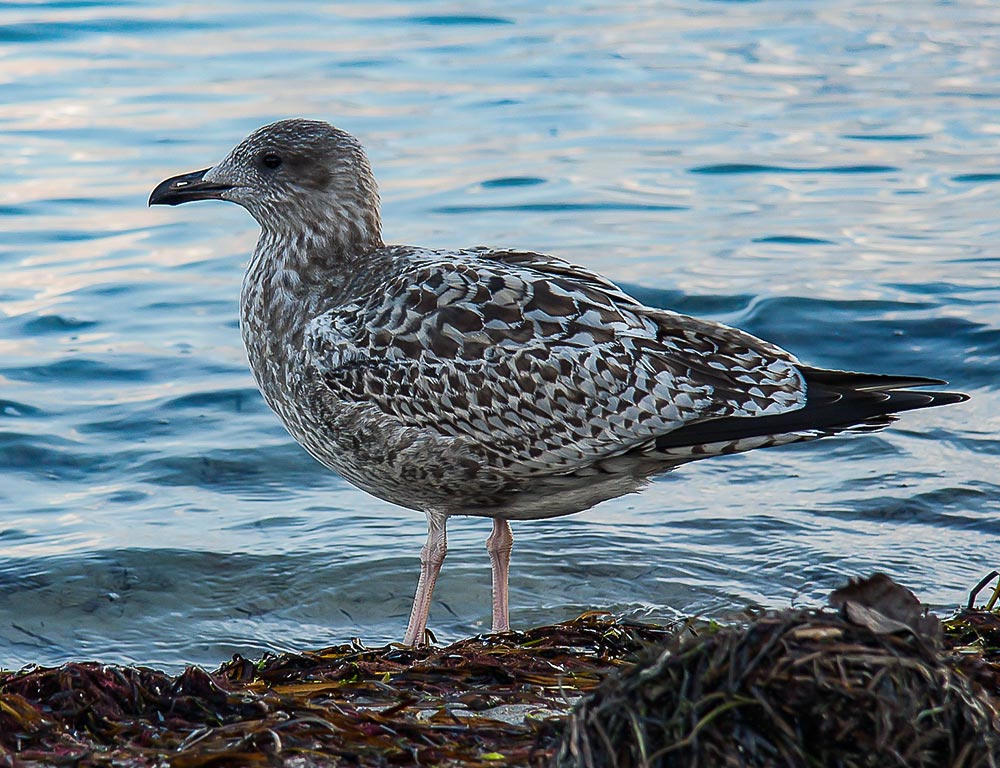
Skuas are a group of predatory seabirds with seven species, all belonging to the genus Stercorarius.
They are also known as “Jaegers” in North America and their name originates from the Faroese word for Great Skua – skúgvur.
These birds typically inhabit coastal areas or open oceans where they feed on fish, krill, and other marine creatures.
Skuas can be distinguished by their pointed wings which help them fly long distances while hunting food.
Their distinctive coloration varies depending on age and habitat but generally includes greyish brown upperparts and white underparts with black streaks along its belly area.
The overall size ranges from 24-40 cm making these one of the larger sea bird species.
Scientific classification:
| Kingdom | Animalia |
| Phylum | Chordata |
| Class | Aves |
| Order | Charadriiformes |
| Suborder | Lari |
| Family | Stercorariidae Gray, 1871 |
| Genus | Stercorarius Brisson, 1760 |
46. Phasianidae
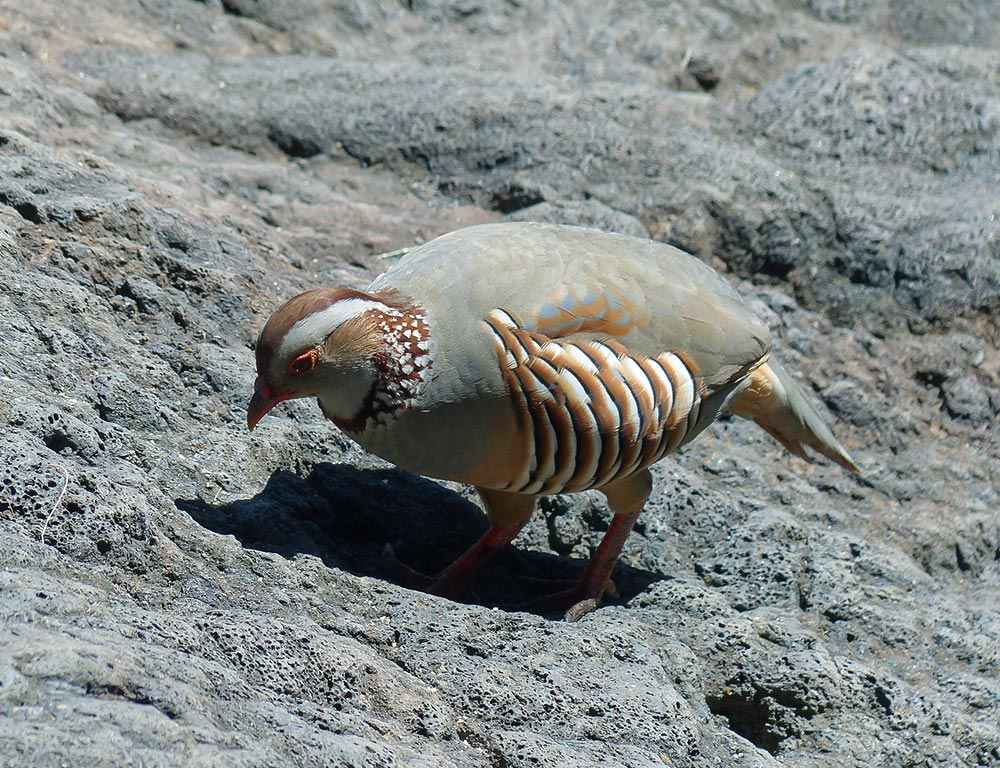
The Phasianidae family of birds contains many popular gamebirds, with a total of 185 species divided across 54 genera.
These heavy ground-living birds include pheasants, partridges, junglefowl, chickens, and turkeys among others like Old World quail and peafowl.
This large family was formerly split into two subfamilies known as the Phasianinae and Perdicinae but this classification has since been changed to reflect more current scientific findings on them.
All these different types of birds have certain things in common such as their strong legs for scratching through leaves or soil looking for food items including insects, seeds, and other vegetation which makes up most of their diet.
They also all tend to be quite colorful to attract mates during breeding season when males will often display vibrant feathers or do dances around females in an attempt at courtship ritual displays.
The majority are monogamous creatures too although some may form short-term pair bonds before going off alone again once mating has taken place – either way.
There tends to be very little parental care given by adults after eggs have hatched so chicks need to fend for themselves right away.
Scientific classification:
| Kingdom | Animalia |
| Phylum | Chordata |
| Class | Aves |
| Order | Galliformes |
| Superfamily | Phasianoidea |
| Family | Phasianidae Horsfield, 1821 |
47. Northern Storm Petrels
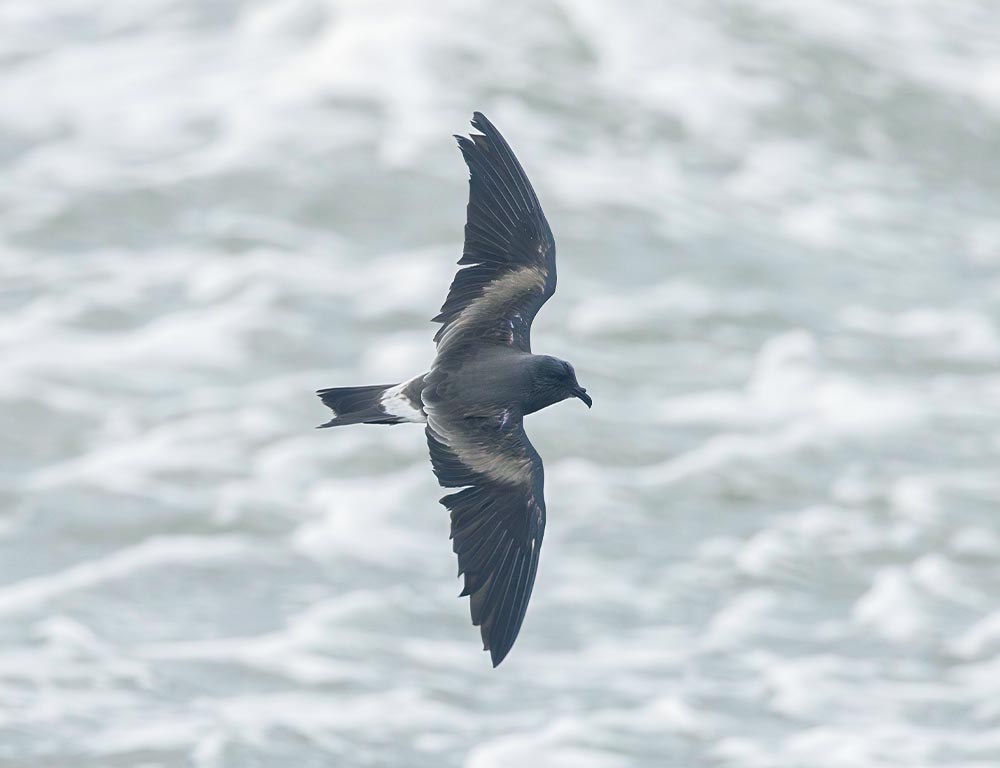
Northern storm petrels are one of the smallest seabirds, inhabiting oceans all over the world.
They have a unique ability to hover over water and pick planktonic crustaceans and small fish from the surface.
Northern storm petrels belong to the genus Hydrobates in the family Hydrobatidae, part of the Procellariiformes order.
This species was once lumped with austral storm petrel but recent studies show that they weren’t related closely which led to them being split into two distinct species now.
These birds can be identified by their dark grey upperparts and wings along with white underparts when seen from afar while feeding on the ocean’s surface.
Scientific classification:
| Kingdom | Animalia |
| Phylum | Chordata |
| Class | Aves |
| Order | Procellariiformes |
| Family | Hydrobatidae Mathews, 1912 |
| Genus | Hydrobates F. Boie, 1822 |
48. European Storm Petrel
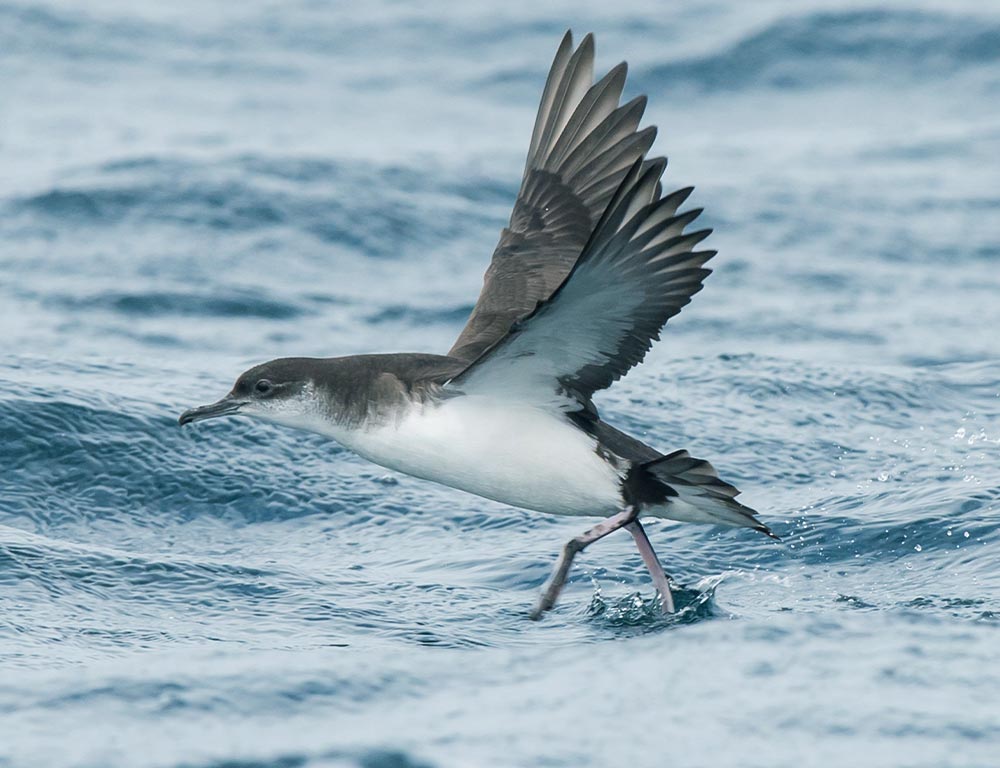
The European Storm Petrel is a small black seabird with a white rump and wings. It has an unusual, bat-like flight which flutters across the sky.
Its population mainly breeds on islands off the coasts of Europe, but can also be found in parts of North America as well as Japan and Korea.
They feed on planktonic crustaceans such as copepods by ‘pattering’ over water surface or dip-feeding where they plunge into the sea to catch their prey before flying away again.
These birds are elusive yet social when breeding; during this time they form colonies often near cliffs for protection from predators and harsh conditions at sea.
Scientific classification:
| Kingdom | Animalia |
| Phylum | Chordata |
| Class | Aves |
| Order | Procellariiformes |
| Family | Hydrobatidae |
| Genus | Hydrobates |
| Species | H. pelagicus |
Also Featured In: Turkey Birds You Should Know, Italian Birds You Should Know
49. Glareolidae
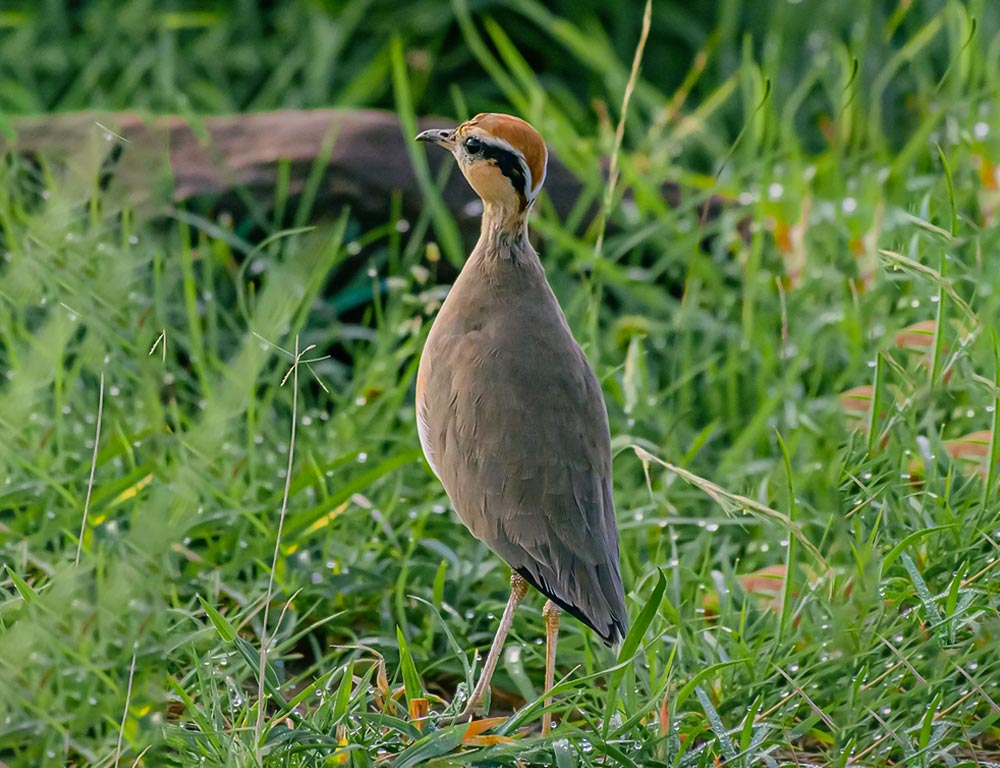
Glareolidae is a family of wading birds, consisting of four genera and 17 species. They are distinguished from other charadrii by their long bills which have a slight downward curve.
Glareolidae live around open grasslands and deserts, where they hunt for insects using the bill to probe into soil or vegetation.
Most species are found in Africa but two pratincoles inhabit parts of Europe and Asia as well.
Coursers tend to be larger than pratincoles with longer legs allowing them to run quickly across sandy dunes while feeding on small animals like lizards or spiders.
Pratincoles feed mainly on flying insects, snatching them out of midair with great agility during flight.
All glareolids share unique features such as large eyes that help it spot prey at night easily making this group one interesting bird family.
Scientific classification:
| Kingdom | Animalia |
| Phylum | Chordata |
| Class | Aves |
| Order | Charadriiformes |
| Suborder | Lari |
| Family | Glareolidae CL Brehm, 1831 |
50. Great Cormorant
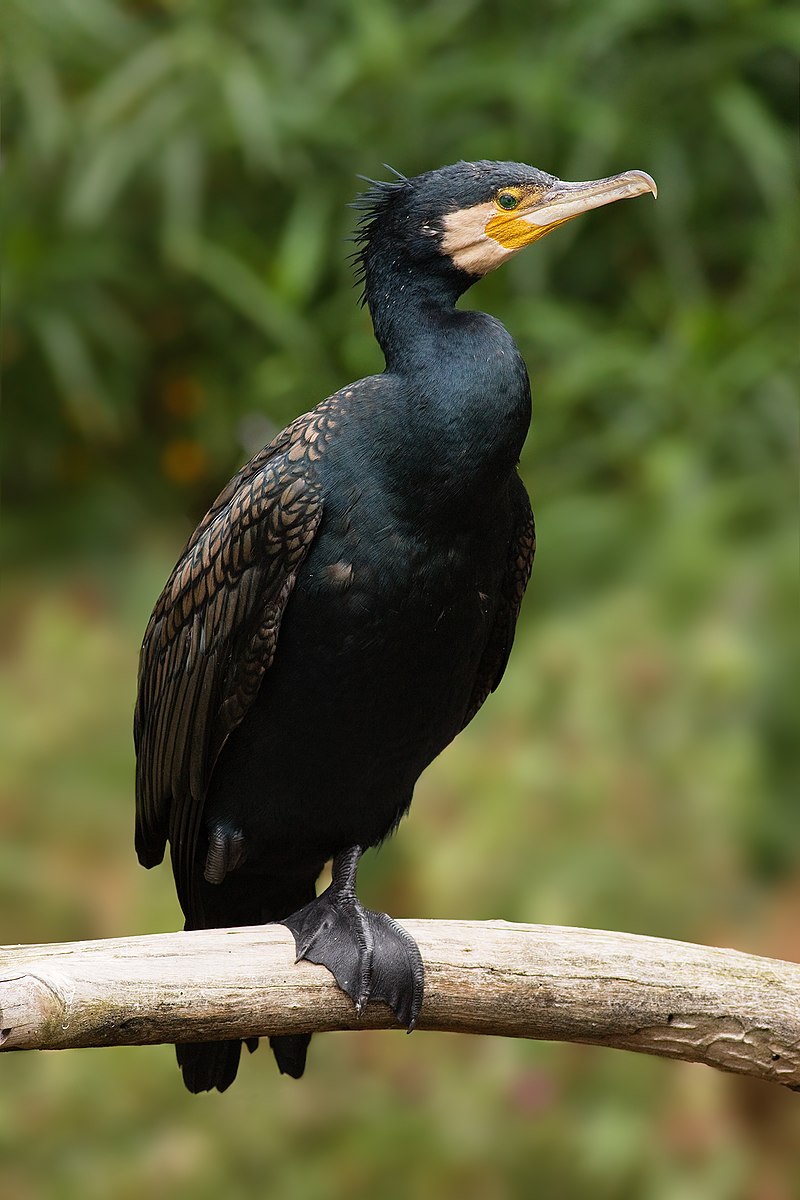
The Great Cormorant is a large seabird belonging to the Cormorant family. It has many names, including Black Shag in New Zealand and Large Cormorant in India.
Its striking black feathers make it easy to recognize along coastlines or near bodies of water. The bird can measure up to 1 meter long with a wingspan of around two meters and weighs roughly 3 kilograms.
In flight, its neck is stretched out straight ahead while its bill points downwards – an unmistakable sight for any keen observer.
Cormorants are strong swimmers and excellent divers, frequently going underwater in search of food such as fish or crustaceans that they scavenge from the ocean floor.
They live primarily on coasts but have also been seen inland where there are suitable waterways available – providing another opportunity for nature lovers hoping to catch a glimpse of this impressive species.
Scientific classification:
| Kingdom | Animalia |
| Phylum | Chordata |
| Class | Aves |
| Order | Suliformes |
| Family | Phalacrocoracidae |
| Genus | Phalacrocorax |
| Species | P. carbo |
Conclusion
This Birdwatcher’s Guide has been a delightful journey through the vibrant world of Irish avifauna. We’ve uncovered the secrets of 50 remarkable species, shedding light on their preferred habitats and distinctive characteristics.
From the rugged cliffs of the Atlantic coast to the serene lakes of the inland countryside, Ireland offers a diverse canvas for birdwatching enthusiasts. As we close this chapter, remember that observing and protecting these avian wonders go hand in hand.
By respecting their habitats and understanding their needs, we can ensure the continued presence of these remarkable creatures, contributing to the conservation of Irish birds for generations to come.